Essay on Zoo for Students and Children
500 words essay on zoo.
The world is a huge place to see. It consists of so many living organisms that it is impossible to see each and every one of them. Especially for human beings, who are fascinated very much by animals. For the same reasons, zoos were created so that humans can interact better with animals.

In other words, a zoo is a facility that has animals, birds, and reptiles of all kinds. They are confined to space where they are given food and medical facilities. The government has given strict guidelines to maintain a zoo. This is done keeping in mind the animal’s safety. In addition, zoos are made breeding grounds for animals to protect their species.

Benefits of Zoo
Zoos were made to bring wildlife closer to humans. It gave humans a better and up-close view of them. This allows various researchers and scientists to note the behavioral pattern of the animals. It helps them in their studies and discover new things.
In addition, zoos are a great source of entertainment for kids. They love visiting zoos and interacting with animals. This helps them learn practical knowledge about the animal. It also gives them exposure to wildlife and widens their knowledge.
Furthermore, zoos give us easy access to rare animals. Had it not been for zoos, we would have never been able to see what some animals looked like. We enjoy their behavior and it also creates awareness about the extinction of the rare species.
Similarly, zoos are a safe breeding ground for animals. They ensure the animal breeds so they never go extinct. This helps in creating a good balance. Moreover, the zoos ensure the animals get all the nutrition in their bodies to lead a healthy life. This is beneficial as the animal may not get guaranteed meals in the forests.
Get the huge list of more than 500 Essay Topics and Ideas
Disadvantages of Zoo
While the zoo is a great place for entertainment, it is also very exploitive. It takes advantage of the poor animals to make a profit off them. The zoos keep animals in very bad conditions. It takes unethical methods just to create revenue.
Furthermore, zoos are very unfair to animals. They take the animals out of their natural habitats just for the sake of human entertainment. Why would the animals be put into cages as humans want them to? They are voiceless creatures who are being forced to live in poor conditions. Imagine putting humans into cages so animals could come to see them. It sounds inhumane the other way around but not when we do the same to animals.
Most importantly, zoos do not take proper care of exotic animals. They bring them over in their facility despite knowing that they cannot survive in that climate. Some zoos do not take enough precautionary measures to keep the animals safe. This has resulted in so many deaths of animals that it seems cruel.
In short, though zoos are very helpful to humans and animals to an extent. They must be monitored constantly to ensure the animals are safe. The unethical zoos must be shut down at once to prevent any further loss of animals.
FAQs on Zoo
Q.1 List the advantages of Zoo
A.1 Zoos bring the wildlife close to humans. It helps researchers study them closely and discover new things. It protects rare species and provides a safe breeding ground for them as well.
Q.2 How are zoos harmful to animals?
A.2 Zoos are very harmful to animals. They take them out of their natural habitat for human entertainment. They make them stay in poor conditions due to which they also lose their life and get infections.
Customize your course in 30 seconds
Which class are you in.

- Travelling Essay
- Picnic Essay
- Our Country Essay
- My Parents Essay
- Essay on Favourite Personality
- Essay on Memorable Day of My Life
- Essay on Knowledge is Power
- Essay on Gurpurab
- Essay on My Favourite Season
- Essay on Types of Sports
Leave a Reply Cancel reply
Your email address will not be published. Required fields are marked *
Download the App

- Organization
- WildCare Park
- Wildlife Reserve
Visit the Saint Louis Zoo
About your visit.
- Hours and Prices
- Parking and Maps
- Accessibility and Rentals
- Rules and Regulations
- Frequently Asked Questions
- Hotel Partners
Things To Do
- See Animals
- Attractions
- Behind-the-Scenes Tours

Explore all Animals
By classification.
- Invertebrates
- Discovery Corner
- River's Edge
- Historic Hill
- Lakeside Crossing

Action, Advocacy and Research
Our conservation efforts.
- Institute for Conservation Medicine
- WildCare Institute
- Reproductive and Behavioral Sciences
- AZA Reproductive Management Center
Animal Care
- Animal Food and Nutrition Center
- Enrichment and Training
- Species Survival Plans
- Veterinary Hospital
- Schools and Organizations
- Virtual Learning
- Education Registration
- Attend an Event
- Host an Event

The Importance of Zoos
Zoos are critical to the survival of wildlife, hubs of research and scientific discovery, and bridges that connect people to Earth's natural wonders.
The world around us is changing fast. Species of wildlife are facing global extinction on a massive scale. About 41 percent of all amphibian species and 26 percent of all mammals are now threatened with extinction, and fully half of the world’s primates — our closest relatives — teeter on the edge of existence. We face the loss of one in eight of all bird species. Overall, the extinction rate has increased a hundred-fold over the last century, and today we estimate that over 18,000 species face oblivion. Zoos are in a unique position to make a difference. Zoos are focused on offering the very best possible nutrition, enrichment and environment for animals in their care.
The many committed people at zoos care deeply about animals, working with an incredible variety of species, from one-celled creatures to elephants. Our research on behavior, reproductive biology, nutrition, animal health and genetics is valuable to wildlife managers, field researchers and other scientists.
For example, the Saint Louis Zoo has been doing a mother/infant bonding study with antelope and other hoofed animals at Red Rocks for 14 years. The data we've gathered — how often and when a species typically nurses, who initiates nursing, proximity, grooming, nuzzling — has provided information to field researchers that would be hard to come by otherwise.
Zoo professionals are experts on breeding small populations of endangered species. That knowledge, too, has become valuable to scientists working with wildlife populations. Nowadays animals in wild habitats are often found in small, fragmented groups because of agriculture, logging or other human activity. No other university, conservation organization or research facility has been working with small population management as long or as well as zoos.
Zoos work well with others. We collaborate with one another in Species Survival Plans and other programs to manage endangered species for the best genetic diversity possible. We collaborate with organizations worldwide on conservation breeding, habitat preservation, community development, public education and research.
In 2004, the Saint Louis Zoo established the Saint Louis Zoo WildCare Institute to work in conservation hotspots locally and around the globe. From Forest Park and Missouri streams to the Horn of Africa or the coastline of Peru, the Zoo is taking a holistic approach to wildlife conservation. While the Zoo has been involved in helping save endangered species for decades, our goal today is create a sustainable future for wildlife and for people around the world. Ultimately, we need to help save the ecosystems on which animals and humans depend. WildCare Institute addresses three key ingredients in conservation success: wildlife management and recovery, conservation science, and support of the human populations that coexist with wildlife.
People learn at zoos. They learn in our formal classes, lectures, camps, teacher workshops, distance learning, zoo tours, overnights and outreach programs. Informally they learn from keeper chats, docent volunteers, interpreters, signage and special exhibits. Most important, they learn from observing zoo animals.
At the Saint Louis Zoo, about 500,000 children and adults participate in our formal programs, including classes and Camp KangaZoo each year. Of our 3,000,000 visitors annually, about 1.6 million interact with an educational interpreter, docent or zookeeper who provides educational experiences and information. Each year the Zoo is visited by over 1,400 school groups who come for a free field trip. Of these schoolchildren, 31% are from economically disadvantaged neighborhoods, and 17% are special needs children.
On a scale of 1 to 10, our visitors rate their educational experience at the Saint Louis Zoo as a 9.1.
Families matter! Zoos are a place where families can have unique experiences together every time they visit. Today's families are more conscious than ever of the need to teach their children about the natural world and respect for living creatures.
When the Saint Louis Zoo does visitor research, we find that, not surprisingly, the single most compelling reason to visit the Zoo is to see the animals. Another reason our visitors find compelling is to spend time outdoors with the family.
People make an emotional connection with animals at zoos that can last a lifetime. Visitor research shows that when people experience the wonderment of animals, they are spurred on to learn more and act differently.
- CBSE Class 10th
- CBSE Class 12th
- UP Board 10th
- UP Board 12th
- Bihar Board 10th
- Bihar Board 12th
- Top Schools in India
- Top Schools in Delhi
- Top Schools in Mumbai
- Top Schools in Chennai
- Top Schools in Hyderabad
- Top Schools in Kolkata
- Top Schools in Pune
- Top Schools in Bangalore
Products & Resources
- JEE Main Knockout April
- Free Sample Papers
- Free Ebooks
- NCERT Notes
- NCERT Syllabus
- NCERT Books
- RD Sharma Solutions
- Navodaya Vidyalaya Admission 2024-25
- NCERT Solutions
- NCERT Solutions for Class 12
- NCERT Solutions for Class 11
- NCERT solutions for Class 10
- NCERT solutions for Class 9
- NCERT solutions for Class 8
- NCERT Solutions for Class 7
- JEE Main 2024
- MHT CET 2024
- JEE Advanced 2024
- BITSAT 2024
- View All Engineering Exams
- Colleges Accepting B.Tech Applications
- Top Engineering Colleges in India
- Engineering Colleges in India
- Engineering Colleges in Tamil Nadu
- Engineering Colleges Accepting JEE Main
- Top IITs in India
- Top NITs in India
- Top IIITs in India
- JEE Main College Predictor
- JEE Main Rank Predictor
- MHT CET College Predictor
- AP EAMCET College Predictor
- GATE College Predictor
- KCET College Predictor
- JEE Advanced College Predictor
- View All College Predictors
- JEE Main Question Paper
- JEE Main Cutoff
- JEE Main Advanced Admit Card
- AP EAPCET Hall Ticket
- Download E-Books and Sample Papers
- Compare Colleges
- B.Tech College Applications
- KCET Result
- MAH MBA CET Exam
- View All Management Exams
Colleges & Courses
- MBA College Admissions
- MBA Colleges in India
- Top IIMs Colleges in India
- Top Online MBA Colleges in India
- MBA Colleges Accepting XAT Score
- BBA Colleges in India
- XAT College Predictor 2024
- SNAP College Predictor
- NMAT College Predictor
- MAT College Predictor 2024
- CMAT College Predictor 2024
- CAT Percentile Predictor 2023
- CAT 2023 College Predictor
- CMAT 2024 Admit Card
- TS ICET 2024 Hall Ticket
- CMAT Result 2024
- MAH MBA CET Cutoff 2024
- Download Helpful Ebooks
- List of Popular Branches
- QnA - Get answers to your doubts
- IIM Fees Structure
- AIIMS Nursing
- Top Medical Colleges in India
- Top Medical Colleges in India accepting NEET Score
- Medical Colleges accepting NEET
- List of Medical Colleges in India
- List of AIIMS Colleges In India
- Medical Colleges in Maharashtra
- Medical Colleges in India Accepting NEET PG
- NEET College Predictor
- NEET PG College Predictor
- NEET MDS College Predictor
- NEET Rank Predictor
- DNB PDCET College Predictor
- NEET Admit Card 2024
- NEET PG Application Form 2024
- NEET Cut off
- NEET Online Preparation
- Download Helpful E-books
- Colleges Accepting Admissions
- Top Law Colleges in India
- Law College Accepting CLAT Score
- List of Law Colleges in India
- Top Law Colleges in Delhi
- Top NLUs Colleges in India
- Top Law Colleges in Chandigarh
- Top Law Collages in Lucknow
Predictors & E-Books
- CLAT College Predictor
- MHCET Law ( 5 Year L.L.B) College Predictor
- AILET College Predictor
- Sample Papers
- Compare Law Collages
- Careers360 Youtube Channel
- CLAT Syllabus 2025
- CLAT Previous Year Question Paper
- NID DAT Exam
- Pearl Academy Exam
Predictors & Articles
- NIFT College Predictor
- UCEED College Predictor
- NID DAT College Predictor
- NID DAT Syllabus 2025
- NID DAT 2025
- Design Colleges in India
- Top NIFT Colleges in India
- Fashion Design Colleges in India
- Top Interior Design Colleges in India
- Top Graphic Designing Colleges in India
- Fashion Design Colleges in Delhi
- Fashion Design Colleges in Mumbai
- Top Interior Design Colleges in Bangalore
- NIFT Result 2024
- NIFT Fees Structure
- NIFT Syllabus 2025
- Free Design E-books
- List of Branches
- Careers360 Youtube channel
- IPU CET BJMC
- JMI Mass Communication Entrance Exam
- IIMC Entrance Exam
- Media & Journalism colleges in Delhi
- Media & Journalism colleges in Bangalore
- Media & Journalism colleges in Mumbai
- List of Media & Journalism Colleges in India
- CA Intermediate
- CA Foundation
- CS Executive
- CS Professional
- Difference between CA and CS
- Difference between CA and CMA
- CA Full form
- CMA Full form
- CS Full form
- CA Salary In India
Top Courses & Careers
- Bachelor of Commerce (B.Com)
- Master of Commerce (M.Com)
- Company Secretary
- Cost Accountant
- Charted Accountant
- Credit Manager
- Financial Advisor
- Top Commerce Colleges in India
- Top Government Commerce Colleges in India
- Top Private Commerce Colleges in India
- Top M.Com Colleges in Mumbai
- Top B.Com Colleges in India
- IT Colleges in Tamil Nadu
- IT Colleges in Uttar Pradesh
- MCA Colleges in India
- BCA Colleges in India
Quick Links
- Information Technology Courses
- Programming Courses
- Web Development Courses
- Data Analytics Courses
- Big Data Analytics Courses
- RUHS Pharmacy Admission Test
- Top Pharmacy Colleges in India
- Pharmacy Colleges in Pune
- Pharmacy Colleges in Mumbai
- Colleges Accepting GPAT Score
- Pharmacy Colleges in Lucknow
- List of Pharmacy Colleges in Nagpur
- GPAT Result
- GPAT 2024 Admit Card
- GPAT Question Papers
- NCHMCT JEE 2024
- Mah BHMCT CET
- Top Hotel Management Colleges in Delhi
- Top Hotel Management Colleges in Hyderabad
- Top Hotel Management Colleges in Mumbai
- Top Hotel Management Colleges in Tamil Nadu
- Top Hotel Management Colleges in Maharashtra
- B.Sc Hotel Management
- Hotel Management
- Diploma in Hotel Management and Catering Technology
Diploma Colleges
- Top Diploma Colleges in Maharashtra
- UPSC IAS 2024
- SSC CGL 2024
- IBPS RRB 2024
- Previous Year Sample Papers
- Free Competition E-books
- Sarkari Result
- QnA- Get your doubts answered
- UPSC Previous Year Sample Papers
- CTET Previous Year Sample Papers
- SBI Clerk Previous Year Sample Papers
- NDA Previous Year Sample Papers
Upcoming Events
- NDA Application Form 2024
- UPSC IAS Application Form 2024
- CDS Application Form 2024
- CTET Admit card 2024
- HP TET Result 2023
- SSC GD Constable Admit Card 2024
- UPTET Notification 2024
- SBI Clerk Result 2024
Other Exams
- SSC CHSL 2024
- UP PCS 2024
- UGC NET 2024
- RRB NTPC 2024
- IBPS PO 2024
- IBPS Clerk 2024
- IBPS SO 2024
- Top University in USA
- Top University in Canada
- Top University in Ireland
- Top Universities in UK
- Top Universities in Australia
- Best MBA Colleges in Abroad
- Business Management Studies Colleges
Top Countries
- Study in USA
- Study in UK
- Study in Canada
- Study in Australia
- Study in Ireland
- Study in Germany
- Study in China
- Study in Europe
Student Visas
- Student Visa Canada
- Student Visa UK
- Student Visa USA
- Student Visa Australia
- Student Visa Germany
- Student Visa New Zealand
- Student Visa Ireland
- CUET PG 2024
- IGNOU B.Ed Admission 2024
- DU Admission 2024
- UP B.Ed JEE 2024
- LPU NEST 2024
- IIT JAM 2024
- IGNOU Online Admission 2024
- Universities in India
- Top Universities in India 2024
- Top Colleges in India
- Top Universities in Uttar Pradesh 2024
- Top Universities in Bihar
- Top Universities in Madhya Pradesh 2024
- Top Universities in Tamil Nadu 2024
- Central Universities in India
- CUET Exam City Intimation Slip 2024
- IGNOU Date Sheet
- CUET Mock Test 2024
- CUET Admit card 2024
- CUET PG Syllabus 2024
- CUET Participating Universities 2024
- CUET Previous Year Question Paper
- CUET Syllabus 2024 for Science Students
- E-Books and Sample Papers
- CUET Exam Pattern 2024
- CUET Exam Date 2024
- CUET Syllabus 2024
- IGNOU Exam Form 2024
- CUET UG Admit Card 2024 (Out) Live
- CUET 2024 Admit Card
Engineering Preparation
- Knockout JEE Main 2024
- Test Series JEE Main 2024
- JEE Main 2024 Rank Booster
Medical Preparation
- Knockout NEET 2024
- Test Series NEET 2024
- Rank Booster NEET 2024
Online Courses
- JEE Main One Month Course
- NEET One Month Course
- IBSAT Free Mock Tests
- IIT JEE Foundation Course
- Knockout BITSAT 2024
- Career Guidance Tool
Top Streams
- IT & Software Certification Courses
- Engineering and Architecture Certification Courses
- Programming And Development Certification Courses
- Business and Management Certification Courses
- Marketing Certification Courses
- Health and Fitness Certification Courses
- Design Certification Courses
Specializations
- Digital Marketing Certification Courses
- Cyber Security Certification Courses
- Artificial Intelligence Certification Courses
- Business Analytics Certification Courses
- Data Science Certification Courses
- Cloud Computing Certification Courses
- Machine Learning Certification Courses
- View All Certification Courses
- UG Degree Courses
- PG Degree Courses
- Short Term Courses
- Free Courses
- Online Degrees and Diplomas
- Compare Courses
Top Providers
- Coursera Courses
- Udemy Courses
- Edx Courses
- Swayam Courses
- upGrad Courses
- Simplilearn Courses
- Great Learning Courses
Essay on Zoo
The world is an enormous place to see. It consists of so many living organisms that it is impossible to see every one of them. Especially when human beings are always fascinated and enthusiastic about animals. For the same reasons, zoos were created so that humans can interact better with animals and act as sightseeing spots for humans.
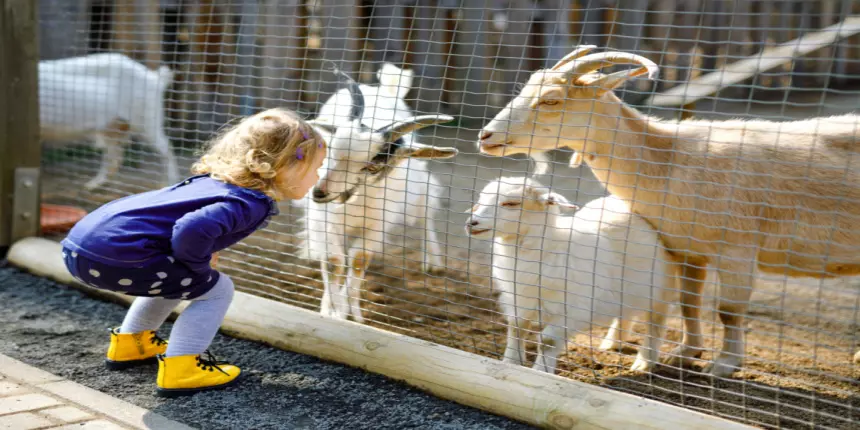
100 Words essay on zoo
A zoo is where animals are kept and displayed for the enjoyment and education of visitors. Zoos often have a variety of animals from different regions of the world, including lions, tigers, elephants, gorillas, and many others. Some zoos also offer educational programs and activities for children, such as feeding the animals or learning about their natural habitats. Visiting the zoo can be a fun and educational experience for people of all ages. Many zoos also have conservation programs to help protect endangered species and their habitats. Overall, zoos play an important role in educating the public about the importance of wildlife and conservation.
200 Words essay on zoo
A zoo is a public facility where animals are kept and exhibited for the enjoyment and education of visitors. Zoos often have diverse animals from different regions, including lions, tigers, elephants, gorillas, and many others. Some zoos also have aquariums, aviaries, and other exhibits that allow visitors to see a wide range of aquatic and bird species.
Zoos often have educational programs and activities for children, such as guided tours, animal feedings, and interactive exhibits. These programs can help children learn about the natural behaviour and habitats of the animals on display, as well as the importance of conservation. Many zoos also have conservation programs to help protect endangered species and their habitats.
Visiting the zoo can be a fun and educational experience for people of all ages. In addition to seeing the animals up close, zoos often have play areas, restaurants, and other amenities to make the visit more enjoyable. Many zoos also have special events and exhibits throughout the year, such as seasonal festivals and animal shows. Children always get excited about visiting the zoo. This way, we can educate the children about wildlife and their habitat. This is one of the ways to experience nature’s wonders in the form of wildlife.
500 Words essay on zoo
Visiting the zoo can be a fun and educational experience for people of all ages. In addition to seeing the animals up close, zoos often have play areas, restaurants, and other amenities to make the visit more enjoyable. Many zoos also have special events and exhibits throughout the year, such as seasonal festivals and animal shows.
The history of zoos dates back to ancient civilisations, where rulers and wealthy individuals kept exotic animals as symbols of their power and wealth. The first modern zoo was established in 1763 in Vienna, Austria, and featured a collection of animals from around the world. Since then, zoos have evolved to become important centres for education and conservation, as well as sources of entertainment.
However, zoos have also faced criticism for their treatment of animals. In the past, zoos were often criticised for their poor living conditions and lack of animal space. In recent years, many zoos have made efforts to improve the welfare of their animals and provide more naturalistic habitats.
Despite these challenges, zoos remain popular destinations for families and individuals of all ages. In addition to providing a fun and educational experience, zoos also play an essential role in conservation efforts and public education about the natural world. As such, zoos will likely continue to be a necessary part of our society for many years.
Personal Experience
When we would go on family vacations, I used to be quite interested in visiting the zoo. Being able to observe and be amazed by different animals was always exciting. It would be a standard itinerary for every vacation. However, when I got older, I realised how harsh the concept of zoos really was. Animals are living things that would prefer to remain in their natural habit where they dont have to be subjected to human brutality and torture rather than to spend their entire lives in a cage and feel locked up only to amuse humans. After a while, I stopped going to zoos and inspired more individuals to do the same.
Zoos can be fascinating places for us as humans, but using animals for amusement at the expense of their freedom is a terribly selfish act. Instead of enclosing animals for our convenience, it is preferable to visit alternative tourist destinations like sanctuaries where we can observe the wildlife.
Applications for Admissions are open.

Aakash iACST Scholarship Test 2024
Get up to 90% scholarship on NEET, JEE & Foundation courses

ALLEN Digital Scholarship Admission Test (ADSAT)
Register FREE for ALLEN Digital Scholarship Admission Test (ADSAT)

JEE Main Important Physics formulas
As per latest 2024 syllabus. Physics formulas, equations, & laws of class 11 & 12th chapters

PW JEE Coaching
Enrol in PW Vidyapeeth center for JEE coaching

PW NEET Coaching
Enrol in PW Vidyapeeth center for NEET coaching

JEE Main Important Chemistry formulas
As per latest 2024 syllabus. Chemistry formulas, equations, & laws of class 11 & 12th chapters
Download Careers360 App's
Regular exam updates, QnA, Predictors, College Applications & E-books now on your Mobile
Certifications
We Appeared in
8 Reasons that Zoos are Critically Important for Conservation
A couple of weeks ago, there was an accident at Cincinnati zoo . A child fell into an enclosure with a gorilla named Harambe , and to protect the child the gorilla was shot. I’m not going to recount the story, for three reasons:
- Dozens and dozens of articles have poured over the minutia of the events already.
- I very much doubt I have anything new I could add.
- This one event, however tragic, simply doesn’t interest me very much, when there are vastly more important things to write about.
Yet what this events has done, is reignite the debate over the role of zoos (and aquaria). Whilst much of attention that generates is unfortunately negative, it does give folks like me an opportunity to shout about the great and critically important work zoos do for conservation (and how they might get better at it in the future).
Normally, one would hope that zoos themselves would be proudly showcasing their work, but as I discovered last week on Al Jazeera given the barrage of attacks that Cincinnati experienced, many zoos are reluctant to speak up. So with the debate being a little one-sided, here’s some of the reasons zoos are critical to conservation.
The Role of Zoos in Conservation
1. There are 39 animal species currently listed by the IUCN as Extinct in the Wild. These are species that would have vanished totally were it not for captive populations around the world, many of which reside in zoos. For me, this is the single most important role zoos can play. Incidentally, it’s the same for botanic gardens too, but no-one seems to care about those!
2. For species whose survival in the wild looks in doubt, zoos often set up ‘insurance’ populations. These are captive groups of animals that could in a worst case scenario assist in reintroduction to the wild, should the original population go extinct. The Amur leopard, for example: There are perhaps 35-65 left in the wild, a species teetering right on the brink. But fortunately there is a long running breeding program with over 200 surviving in captivity. The Zoological Society of London , as an example, participates in over 160 of these programmes.
3. Reintroduction. It is often argued that zoos are bad because so few reintroduction actually happen. I would argue that it’s not the zoos at fault, it’s that a reintroduction can’t occur if the reason they went extinct in the first place hasn’t been resolved. Amongst the most well known and successful reintroductions are:
- The Scimitar-Horned Oryx , having become extinct in Africa in the 1980s, zoos around the world maintained a captive population and at last this year, a reintroduction led by the Sahara Conservation Fund has begun .
- The Californian Condor , only 23 existed in the wild in the early 1980s. The last of the wild population was taken into captivity in a last ditched attempt to save the species, with chicks being reared at San Diego zoo . It worked. There are now more than 400 in the wild.
- The Golden Lion Tamarin , perhaps the most famous of all reintroductions. In 2003, the Golden Lion Tamarin was downlisted from Critically Endangered to Endangered after thirty years of tireless conservation efforts involving the Smithsonian National Zoological Park and the Associação Mico-Leao-Dourado in Rio de Janeiro. More than one-third of the wild population are descendants of the reintroduction program which has contributed significantly not only to the numbers of living in the wild, but also to the protection 3,100 ha of forests within their range.
Indeed the very idea of reintroducing species is new, and fraught with difficulties. It’s risky and hard. No-one wants it to go wrong, so give them your support.
4. In 2014, 700 million people visited zoos worldwide. OK, not all zoos are good at engagement. Indeed not all zoos are good full stop. But, surely that number of visits had to create some sort of connection with the natural world that might not have occurred otherwise.
5. Zoos are a living museum. What we learn about wild animals in captivity can help us manage and conserve them in the wild. From animal behaviour, to reproductive rates to dietary requirements.
6. Zoos raise money for conservation efforts. It’s difficult to engage people with conservation efforts taking place half a world away, believe me, I know. But by enabling people to experience wildlife first hand, and using that as a vessel in which to tell a story, we can I hope increase participation in international conservation efforts.
7. Helping respond to emergencies. In the last 20 years, an estimated 168 amphibian species have gone extinct. In addition to habitat loss, chytrid fungus has emerged as a deadly threat to worldwide amphibian populations. Responding to threats such as this, especially in small or medium sized vertebrates is surely one of the greatest uses of zoos around the world. In fact, many zoos have set up specialist amphibian centers and are pioneering treatment and breeding programmes.
8. They remind us that we can succeed. Conservation is full of bad news stories, yet on many occasions I have stood peering through glass at a species that shouldn’t exist. At WWT Barnes on the outskirts of London I have stood on a wet Winter day watching Nene , which was once the world’s rarest goose (now, incidentally, successfully reintroduced). In Antsohihy, Madagascar I have peered through the mesh fence at the world’s only population of Malagasy pochard , a duck thought to be extinct for years and then rediscovered. In the UK I’ve stood while a Bali Myna flew over my head, a bird numbering less than 100 in the wild (but thankfully more than 1000 in captivity). For me at least, zoos remind us that conservation does work, we just need more of it.
So where Do Zoos Go In the Future?
But zoos are not perfect. Should they continue to keep large predators, or intelligent primates? Over the next few decades, probably not. Should large new animals be collected from the wild? No, unless there is a compelling case to develop a captive breeding program. But are zoos changing and developing? Yes! More than ever, good zoos are aware of their evolving role in conservation and responding to it.
Would I rather have a species in captivity, than not at all. One hundred times, yes. What we don’t need is knee-jerk reactions to tragic accidents.
It’s easy to attack zoos
It’s absolutely right that there are bad zoos too , both in the UK and around the world. But I would argue that it’s easy to criticise something with a visible and physical presence. What is much, much harder is taking action to support conservation in the field, to reduce the impact of climate change or tackle pollution.
These things are a lot less tangiable, a lot harder to get to grips with. It’s difficult for one individual to feel that they have made much of a difference, and so often we don’t get the same feeling of satisfaction or achievement. That I think is why so many animal rights groups attack zoos, when instead I would argue that they could achieve a much greater net good by working together and protecting natural habitats.
Zoos are run by people who love animals, but as with any passion project, we might differ in our views on how best to achieve what we want. So I would urge you to support the good ones, improve the bad ones, don’t tar them all with the same brush and remember: The focus should be on protecting natural habitats and that zoos can help achieve that.
Live Debate on Al Jazeera
Yet despite zoos popularity with the public, it seems that finding someone willing to defend and support zoos work on live TV is difficult. In fact the zoos themselves were reluctant to send their own representatives for fear of going head to head with vocal animal rights activists. And so instead, I volunteered to voice my views. Let me know what you think!
Photo: Jeroen Kransen
B ook james for a speaking event:.
James is a highly acclaimed public speaker, delivering keynotes, lectures and debates to a wide range of audiences including students, the public, conservation practioners and scientists. Rather than further polarizing already divisive conservation topics, James aims to explain the complexity and nuance of conservation. What we choose to do over the next five decades, will profoundly influence the diversity of life on eath for the next 5 million years. It’s never been a more important, or more exciting time to be a conservationist.
“You gave a splendid talk – cogent, passionate, clear and compelling.”
“Interesting, informative and pitched at exactly the right level for our students.”
“You had the audience hanging off your every word.”
“It was refreshing to have a speaker who talked with such passion”
Home — Essay Samples — Environment — Zoo — The Ethics and Controversies of Zoos
The Ethics and Controversies of Zoos
- Categories: Animal Ethics Zoo
About this sample

Words: 824 |
Published: Aug 24, 2023
Words: 824 | Pages: 2 | 5 min read
Table of contents
Conservation and education, animal welfare and enrichment, research and scientific study, human-animal connection and conservation awareness, ethical concerns and animal rights, alternative approaches: sanctuaries and natural habitats, case studies and success stories, captive breeding and reintroduction, conclusion: navigating the complex landscape of zoos and animal welfare.

Cite this Essay
Let us write you an essay from scratch
- 450+ experts on 30 subjects ready to help
- Custom essay delivered in as few as 3 hours
Get high-quality help

Prof. Kifaru
Verified writer
- Expert in: Environment

+ 120 experts online
By clicking “Check Writers’ Offers”, you agree to our terms of service and privacy policy . We’ll occasionally send you promo and account related email
No need to pay just yet!
Related Essays
3 pages / 1500 words
3 pages / 1352 words
1 pages / 393 words
2 pages / 804 words
Remember! This is just a sample.
You can get your custom paper by one of our expert writers.
121 writers online
Still can’t find what you need?
Browse our vast selection of original essay samples, each expertly formatted and styled
Related Essays on Zoo
The concept of zoos has long been a topic of debate, raising questions about the ethical implications of confining animals for human entertainment and conservation purposes. This essay delves into the multifaceted discussion [...]
For centuries, zoos have been a popular way for people to observe and learn about exotic animals from all over the world. However, the debate over the ethics and morality of keeping animals in captivity has been a contentious [...]
The question of whether zoos help or harm animals is a contentious and complex issue that has sparked widespread debate among animal rights advocates, conservationists, and the general public. On one hand, zoos are touted as [...]
The existence of zoos serves a broader purpose beyond mere entertainment. The benefits that zoos provide in terms of conservation, education, research, and public engagement are undeniable. Through dedicated efforts, zoos [...]
The issue that has been lingering for a long time, why zoos should be banned, is discussed in this essay. “We do not own planet Earth; we belong to it. We must share it with our wildlife” – Steve Irwin. Keeping animals in zoos [...]
I went to the zoo a few weeks ago, and I was watching the Rainforest Fights Back Show. You can tell if the animal is happy or not by looking at their facial expression and how they behave. The animals that were performing didn’t [...]
Related Topics
By clicking “Send”, you agree to our Terms of service and Privacy statement . We will occasionally send you account related emails.
Where do you want us to send this sample?
By clicking “Continue”, you agree to our terms of service and privacy policy.
Be careful. This essay is not unique
This essay was donated by a student and is likely to have been used and submitted before
Download this Sample
Free samples may contain mistakes and not unique parts
Sorry, we could not paraphrase this essay. Our professional writers can rewrite it and get you a unique paper.
Please check your inbox.
We can write you a custom essay that will follow your exact instructions and meet the deadlines. Let's fix your grades together!
Get Your Personalized Essay in 3 Hours or Less!
We use cookies to personalyze your web-site experience. By continuing we’ll assume you board with our cookie policy .
- Instructions Followed To The Letter
- Deadlines Met At Every Stage
- Unique And Plagiarism Free
Talk to our experts
1800-120-456-456

Essay on Zoo
A Zoo is an artificial home to various types of animals, birds, and reptiles. It is a big area safeguarded by wire, trenches and other hindrances so that animals cannot run away or causes any kind of harm to the visitors. There are usually different sections for different types of animals in the zoo.
If any student is looking for a sample essay on the zoo, then they can take a look into the essay given in the following. The essay is written as per the usual structure. By referring to the essay, it will be easy to write on your own. Those who are using the Vedantu app can take a glance through the essay from the app itself. All these study materials are available for absolutely free of cost.
First of all, let's find the origin of the zoo. The word ‘zoo’ is actually a short form of ‘Zoological Park’. The first zoo was menageries, which is a private collection done by the wealthy to show their power. A zoo is a place where many different species of animals are kept so senders can enjoy them. Spreading knowledge about biological diversity in the world is the main motto of the creation of the zoo. Modern zoos are not only for the entertainment of people but also for the education, research and conservation of animals. ‘Arignar anna zoological park’ is the largest zoo in India located in Chennai, Tamil Nadu. This park is spread over 602 hectares which is almost 6 sq.km. A large number of crocodile, Lions and especially endangered species of Bengal Tiger is preserved in this zoo.
Captive breeding makes the zoos a valuable place for animal survival. The re-introduction of the animal species in the jungle is the basic aim behind many captive breeding programs at zoos. Many zoos are the centres where the rare animals are rescued when they are in danger of dying. Moreover, Zoos are categorized into several categories depending on a variety of factors. In which Urban and Suburban zoos are the leading one. As the name itself suggests, urban zoos are those zoos which are located in large cities. Often, these are found in the centre of the city. The animals are kept in less enclosure in most of these zoos. Due to noise, pollution and cramped conditions keeping animals in urban settings is not advisable by the zoologist. On the second hand, Suburban zoos are located in suburban areas and give more territory to roam and provide more natural habitat.
The next one is Safari zoos. They are larger than urban and suburban zoos. Safari zoos are more attractive as they allow the vehicle to drive in the zoo to see the wildlife in the enclosed areas. Some zoos which are dedicated to certain species of animals are special zoos. The aquarium is a good example of it. Aquariums are the exclusive house for the aquatic animals. The Association of Zoos stated,“ Zoos and Aquariums are the best place for your family to get connected with nature.”
Zoos have put more significance on conservation and sufficient animal treatment in recent decades. Zoos are always focused on the preservation of nature. The initial and maintenance cost for developing the zoos is a little bit high. So, they cost a little amount of money from the audience. A day spent in the zoos has uncountable benefits to one's life. In young children, zoos create a love for animal parties. Research students focused very closely on each activity the particular animal is doing. Critics still have many points for arguments about zoos. Critics of the closed breeding programme said that ‘realizing some animal into the wild reduces the number of species. Wildlife is a natural resource. Due to a declining population, a large number of animals have become extinct in the wild.’


FAQs on Zoo Essay
1. What are zoos?
A zoo is a place where many different species of animals are kept so spectators can watch them and entertain themselves. The word ‘zoo’ derives from ‘Zoological Park’.
2. Are zoos needed?
Yes, zoos are needed while there are a lot of controversies around it. The first reason is that the zoos protect endangered species by offering them much-needed shelter. Having lost their natural habitat, some animals rely on zoos for space, safety, and food. Zoos also give the opportunity to people to get close to wild or rare species animals so that they get to know about how they live or what they eat etc. In this way, zoo visitors especially the kids would develop an affection for these wild creatures and get to learn so much about them.
3. Give two disadvantages to zoos?
Yes, animals can be kept in a zoo because of several reasons. A good zoo will loof=k after an animal which will lead to prolonging the life of an animal. Meanwhile, these days zoos run various types of educational programs, which teach us everything we need to know about animals and educate us about the animals. These kinds of programmes also motivate us to protect animals as well. These all are possible as animals and their behaviours are closely observed in a zoo by the experts.
4. Where can I find an essay about the zoo?
We at Vedantu have provided a short essay on zoos. You can go through the essay and take reference from it to understand the pattern. You can get access to that essay directly from the website or you can download the app and take a look at it. These essays along with all the study materials are available on Vedantu site for free of cost.

Presentations made painless
- Get Premium
100 Zoo Essay Topic Ideas & Examples
Inside This Article
Zoos are fascinating places that offer a unique opportunity to observe and learn about a wide variety of animals from all over the world. If you're tasked with writing an essay about zoos, you might be struggling to come up with a topic that is both interesting and informative. To help you out, here are 100 zoo essay topic ideas and examples that you can use as inspiration for your next assignment:
- The ethical implications of keeping animals in zoos
- The role of zoos in conservation efforts
- The impact of zoos on animal behavior
- The history of zoos and how they have evolved over time
- The benefits of zoos for education and research
- The controversy surrounding captive breeding programs in zoos
- The importance of zoos in preserving endangered species
- The challenges of managing a zoo and caring for its animals
- The role of zoos in promoting awareness of wildlife conservation issues
- The impact of zoos on local communities and economies
- The role of zoos in promoting animal welfare and ethics
- The debate over whether zoos should exist in the modern world
- The cultural significance of zoos in different societies
- The impact of climate change on zoos and their animal populations
- The role of zoos in public education and outreach programs
- The challenges of balancing conservation efforts with visitor experiences in zoos
- The impact of captivity on animal behavior and well-being in zoos
- The role of zoos in promoting environmental awareness and sustainability
- The ethics of using animals in zoo entertainment shows and performances
- The impact of zoos on biodiversity and ecosystem health
- The role of zoos in promoting animal rights and welfare legislation
- The impact of zoo closures and budget cuts on animal populations
- The challenges of reintroducing captive-bred animals into the wild
- The role of zoos in supporting local wildlife conservation efforts
- The benefits of zoos for public health and well-being
- The impact of zoos on visitor attitudes towards wildlife conservation
- The role of zoos in promoting sustainable tourism practices
- The challenges of managing invasive species in zoos
- The impact of zoo design and architecture on animal welfare
- The role of zoos in promoting cultural exchange and understanding
- The benefits of zoos for scientific research and discovery
- The impact of zoo accreditation programs on animal welfare standards
- The challenges of breeding endangered species in captivity
- The role of zoos in promoting animal enrichment and mental stimulation
- The ethics of using animals in zoo breeding programs
- The impact of zoos on local ecosystems and biodiversity
- The role of zoos in promoting public awareness of wildlife trafficking
- The benefits of zoos for educating children about conservation
- The challenges of managing a zoo during a pandemic
- The impact of zoo closures on animal welfare and conservation efforts
- The role of zoos in promoting sustainable food and waste management practices
- The ethics of using animals in zoo education programs
- The impact of zoos on wildlife populations in surrounding areas
- The challenges of managing zoo populations and genetics
- The role of zoos in promoting animal welfare legislation
- The benefits of zoos for promoting public engagement with wildlife
- The impact of zoos on local economies and tourism
- The role of zoos in promoting wildlife rehabilitation and release programs
- The challenges of managing zoo populations in the face of climate change
- The ethics of using animals in zoo research and experimentation
- The impact of zoos on animal behavior and social dynamics
- The role of zoos in promoting public awareness of wildlife conservation issues
- The benefits of zoos for promoting sustainable tourism practices
With these 100 zoo essay topic ideas and examples, you should have plenty of inspiration to get started on your next assignment. Whether you're interested in the ethical implications of keeping animals in zoos, the role of zoos in conservation efforts, or the impact of zoos on biodiversity and ecosystem health, there's sure to be a topic that piques your interest. Happy writing!
Want to create a presentation now?
Instantly Create A Deck
Let PitchGrade do this for me
Hassle Free
We will create your text and designs for you. Sit back and relax while we do the work.
Explore More Content
- Privacy Policy
- Terms of Service
© 2023 Pitchgrade
ENCYCLOPEDIC ENTRY
A zoo is a place where animals live in captivity and are put on display for people to view. The word “zoo” is short for “zoological park."
Biology, Social Studies, World History
Loading ...

A zoo is a place where animals live in captivity and are put on display for people to view. The word “ zoo ” is short for “ zoological park.” Zoos contain wide varieties of animals that are native to all parts of the Earth. Though people have kept wild animals for thousands of years, those collections have not always resembled modern zoos . The first zoos were created as private collections by the wealthy to show their power. These private collections were called menageries . Wall carvings found in Egypt and Mesopotamia are evidence that rulers and aristocrats created menageries as early as 2500 BCE. They left records of expeditions to distant places to bring back exotic animals such as giraffes, elephants, bears, dolphins, and birds. There is evidence that ancient zoo owners hired animal handlers to make sure their animals thrived and reproduced . Zoos also existed in later civilizations , including China, Greece, and Rome. The Aztec emperor Montezuma II , in what is today Mexico, maintained one of the earliest animal collections in the Western Hemisphere . It was destroyed by Hernan Cortes during the Spanish conquest in 1520. Modern Zoos The model of the modern, public zoo became popular in 18th century, during the Age of Enlightenment . The Age of Enlightenment was a period in European history when science , reason , and logic were promoted as ideals of society and government . The scientific focus of the Age of Enlightenment extended to zoology . During this time, people started wanting to study animals for scientific reasons . Scientists wanted to research animal behavior and anatomy . To do this, scientists and zookeepers had to keep animals in places that were close to, or resembled , the animals’ natural habitats . The first modern zoo , built in 1793, opened in Paris, France. The menageries of French aristrocrats, including the king and queen, were taken by leaders of the French Revolution and relocated to the Ménagerie du Jardin des Plantes. The facility is still a busy and popular zoo in downtown Paris. Early zoos like the Menagerie du Jardin des Plantes were more like museums of living animals than natural habitats . Animals were kept in small display areas, with as many species as space would allow. Today, zoos are meant to entertain and educate the public but have a strong emphasis on scientific research and species conservation . There is a trend toward giving animals more space and recreating natural habitats . Zoos are usually regulated and inspected by the government . Types of Zoos Urban and Suburban Zoos Urban zoos , located in large cities, still resemble the smaller zoos that were popular 200 years ago. Often, these zoos sit in the middle of cities, making expansion difficult. There is little room for urban zoos to grow, and many of the zoo ’s buildings are historic landmarks that cannot be destroyed or redesigned. In many urban zoos , animals are kept in relatively small enclosures . Some animal activists argue that keeping animals in urban settings is cruel because of cramped conditions, noise, and pollution. Urban zoos are common in Europe, while many zoos in the United States developed as sprawling parks in suburbs outside cities. These open-range zoos give animals more territory to roam and provide more natural habitats . This popular technique of building realistic habitats is called landscape immersion . The San Diego Zoo , in southern California, is the largest zoo in the United States. It is a sub urban zoo that houses more than 4,000 animals (800 different species) in its 0.4 square kilometers (100 acres). Landscape immersion divides animals into their natural habitats , such as the tundra (with reindeer and polar bears) or bamboo forest (featuring pandas.) The San Diego Zoo also includes a wild animal park, which is even more expansive (almost 8 square kilometers or 2,000 acres.) Safari Parks Larger than urban and open-range zoos , safari parks are areas where tourists can drive their own cars to see non-native wildlife living in large, enclosed areas. These attractions allow the animals more space than the small enclosures of traditional zoos . Fuji Safari Park , in Susono, Japan, offers a traditional zoo as well as a drive-through safari park . Visitors can take their own cars or one of the park’s buses. Fuji Safari Park offers night tours, so visitors can see nocturnal animals, or animals that are active at night. At the park, visitors can also feed some animals, such as lions, from bus windows. Not all parks encourage or even allow visitors to feed animals.
Safari parks , especially in Europe, are often part of larger theme parks or resorts . They include golf courses and fairground attractions, such as games and rides. Game Reserves Game reserves are large swaths of land whose ecosystems and native species are protected. The protections allow animals to live and reproduce at natural rates. Animals are allowed to roam free. In the 1800s, a trip to hunt “ big game ” (large animals such as elephants or lions) was called a safari . While some game reserves allow traditional hunting safaris today, others limit visitors to a “photo safari ,” where visitors can shoot photographs, not animals. Animals in all game reserves are protected from illegal hunting , which is a threat to many endangered species . Legal hunts are regulated by the government . Hunters must purchase licenses and are strictly limited to the type and number of animals they can hunt . Poachers , or hunters without licenses, kill animals for valuable body parts. Elephants, for example, are killed by poachers for their ivory tusks. There are game reserves in Asia, the Americas, and Australia. However, most game reserves are in Africa. Millions of visitors flock to sites across Africa to see the same animals that captivated audiences thousands of years ago. The biggest attractions are Africa’s “ Big Five ” species—lions, leopards, rhinoceroses, elephants, and water buffalo. The Big Five are not Africa’s largest species (although the elephant is): They are the most difficult to find and, when legal, to hunt . Only recently has a single zoo , Gondwana Game Reserve in South Africa, offered all Big Five animals in one place. Gondwana sits on 10,000 hectares (24,710 acres) near the center of South Africa’s southern coast . Like many large game reserves , Gondwana has diverse ecosystems that occur naturally and has no need for landscape immersion . In Gondwana, grasslands coexist with shrubland called fynbos . Visitors to Gondwana, like many game reserves , can stay in hotels right in the park. Petting zoos Petting zoos feature domesticated animals that are gentle enough for children to pet and feed. Sheep, goats, donkeys, and rabbits are common petting zoo animals. These types of zoos are found at parks and inside of larger zoos . Sometimes mobile petting zoos travel with fairs or carnivals from city to city. Specialization Most zoos have specialized enclosures and habitats for specific animals. Zoos in cold climates , such as Novosibirsk, Russia, must recreate warm ecosystems for animals like lemurs . Lemurs are a type of primate native to the island of Madagascar, off Africa’s east coast . The summer temperatures of both Siberia and Madagascar are about the same—around 21 degrees Celsius (70 degrees Fahrenheit). However, Madagascar receives about 200 to 250 millimeters (8 to 10 inches) of rain each summer, making it a humid jungle environment. Novosibirsk gets just 60 to 65 millimeters (2 to 3 inches) of rain and snow. The difference in winter temperatures is even more drastic : Madagascar is about 15 degrees Celsius (59 degrees Fahrenheit). Lemurs ’ fur can keep them warm at this temperature . Winter in Novosibirsk is -10 degrees Celsius (13 degrees Fahrenheit). The Novosibirsk Zoo has two species of lemur with a specialized heated enclosure with high humidity . Some zoos are dedicated entirely to certain species. Aquariums are types of zoos that exclusively house aquatic animals. The Sydney Aquarium in Australia has exhibits of all of Australia’s major water systems and is home to more than 650 native Australian species. Aviaries and bird parks are another type of specialized zoo . The Jurong Bird Park in Singapore has more than 8,000 birds of 600 species from around the world. Jurong has more than 1,000 flamingoes in an African wetlands exhibit that features a daily simulated thunderstorm . Conservation The World Association of Zoos and Aquariums , the international organization for zoos , is concerned with the health of animals in zoos . The focus of environmental efforts takes the form of research , captive breeding of rare animals, and conservation . Researchers at zoos can study animals up-close. They can observe behavior such as mating and nutrition choices. Biologists and veterinarians are also available to treat sick or injured animals. Captive breeding of endangered species makes zoos valuable places for animal survival. Animals such as the black soft-shelled turtle, native to India and Bangladesh, are extinct in the wild . But they survive in several zoos around the world, with their health looked after by biologists .
The goal of many captive breeding programs at zoos is the re-introduction of animals into the wild. The California condor , a very large bird native to the west coast of the United States, has been re-introduced to its native habitat after breeding in zoos and wildlife parks. There are several breeding pairs of California condors in the wild today. Critics of captive breeding programs say that releasing a few animals into the wild does little to help the species population. Animals are extinct in the wild largely due to loss of habitat . The re-introduction of animals, especially large mammals that require vast territory for survival, does nothing to recover lost habitat . People continue to develop land for homes and businesses. Zoos often have conservation projects in the native habitats of the animals they keep in captivity. For instance, the World Association of Zoos and Aquariums established a partnership with people in rural Papua New Guinea to save tree kangaroos . These rare species are threatened by loss of habitat and the growing population of Papua New Guinea: Villagers hunt the tree kangaroo for meat. A zoo program introduced a rabbit-farming program to address the nutritional needs of the villagers. Zoos also set up conservation sites where the hunting of tree kangaroos was outlawed. While zoos have put more importance on conservation and humane animal treatment in recent decades, some critics say it is cruel to keep animals in captivity. Critics argue that living in captivity takes away wild animals’ natural behavior and instincts . Supporters of zoos say they play an important role in protecting endangered species .
Modern Menageries People still enjoy collecting animals to display in their private homes. The American entertainer Michael Jackson, for instance, had a menagerie that included tigers, giraffes, parrots, and, of course, his pet chimpanzee, Bubbles. The Colombian drug lord Pablo Escobar kept an enormous private zoo that included elephants, buffalo, and camels. Some of Escobar's hippopotamuses, native to Africa, escaped into the Colombian jungle. After Escobar's death, the rest of the animals were sold or donated to zoos around the world.
City of Brotherly Animals The first zoo in the United States opened in Philadelphia, Pennsylvania, in 1874. The Philadelphia Zoo remains one of the most important zoos and facilities for breeding rare and endangered animals.
Zoo-Literacy Many books of fiction, nonfiction, and historical fiction concern zoos. Life of Pi is a novel by Canadian author Yann Martel. The father of the main character, Pi, is a zookeeper at the Pondicherry Zoo in India. When traveling across the Pacific Ocean, from India to Toronto, Canada, the boat carrying Pi, his family, and all the animals of the zoo sinks. The only survivors, alone on a lifeboat in the middle of the ocean, are Pi and the zoo's Bengal tiger, whose name is Richard Parker. Faithful Elephants: A True Story of Animals, People, and War is a nonfiction book written by Yukio Tsuchiya and illustrated by Ted Levin. The book tells the story of three elephants of the Uneo Zoo in Tokyo, Japan, in the time leading up to World War II. Pride of Baghdad is a graphic novel written by Brian K. Vaughn and illustrated by Niko Henrichon. The factual story, of lions that escaped from the Baghdad Zoo as the war in Iraq began, is told from the lions' point of view.
Media Credits
The audio, illustrations, photos, and videos are credited beneath the media asset, except for promotional images, which generally link to another page that contains the media credit. The Rights Holder for media is the person or group credited.
Illustrators
Educator reviewer, last updated.
October 19, 2023
User Permissions
For information on user permissions, please read our Terms of Service. If you have questions about how to cite anything on our website in your project or classroom presentation, please contact your teacher. They will best know the preferred format. When you reach out to them, you will need the page title, URL, and the date you accessed the resource.
If a media asset is downloadable, a download button appears in the corner of the media viewer. If no button appears, you cannot download or save the media.
Text on this page is printable and can be used according to our Terms of Service .
Interactives
Any interactives on this page can only be played while you are visiting our website. You cannot download interactives.
Related Resources
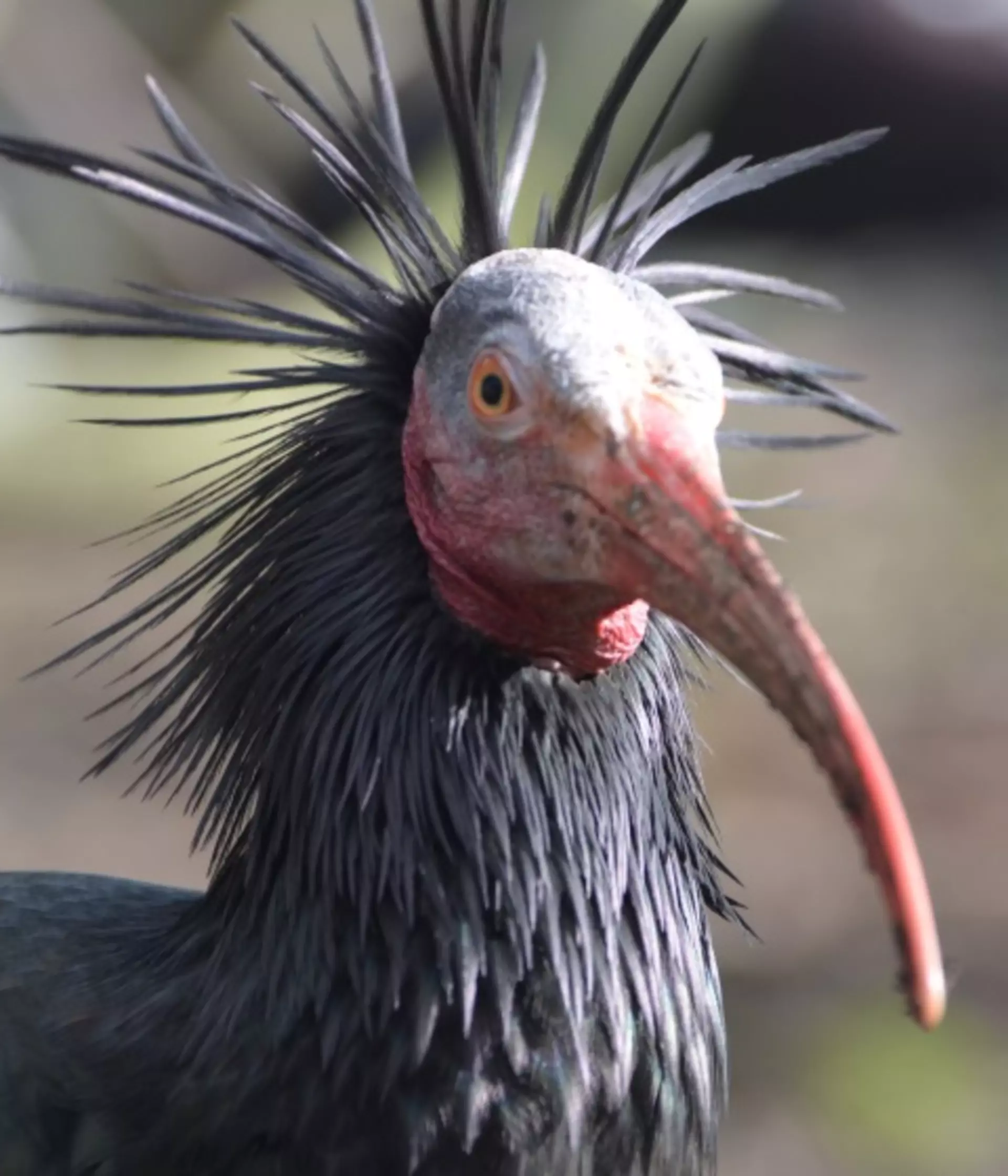
The importance of zoos
Conservation in zoos .
Dominic Jermey, ZSL's Director General, explains why zoos like London Zoo play an important role in bringing wildlife back from the brink.
Last week, four northern bald ibis bred at London Zoo travelled to Spain to be released into the wild, as part of a global conservation project for the Endangered species.
It’s exciting news, as the birds, which were once widespread across Europe, haven’t had a wild population on the continent since the 1700s.
Quite rightly, we’re thrilled to be part of this project, which embodies one of ZSL’s core aims: bringing wildlife back from the brink.
Conservation at London Zoo

Zoo animal reintroductions
Although it’s not the first time we’ve released animals into the wild, it is - as has often been levelled as a criticism towards zoos - a fairly rare occurrence.
So why don’t good zoos - engaged in multiple global breeding programmes, caring for populations of Critically Endangered birds, reptiles, amphibians and mammals from all over the world - then routinely take the next step of boosting threatened populations in their original habitats?
One simple answer is that what we call the wild doesn’t always live up to its name.
Many of the world’s most threatened species are living in poor habitats degraded by agriculture, threatened by disease or hemmed into tiny areas with no way of reaching potential mates without coming into conflict with humans.
Saving the Lake Oku frog
The 2018 Living Planet Index , produced by ZSL for WWF, showed that the population of monitored mammals, birds, reptiles, amphibians and fish have, on average, dropped by more than half in little more than 40 years.
Poachers are targeting pangolins, tigers, elephants and rhinos as part of the illegal wildlife trade, while PCB pollution in our oceans is having a dramatic effect on marine life.
The truth is that many ‘wild’ areas are no longer viable habitats for animals to survive in – and reintroduction is much more complicated than people might realise.
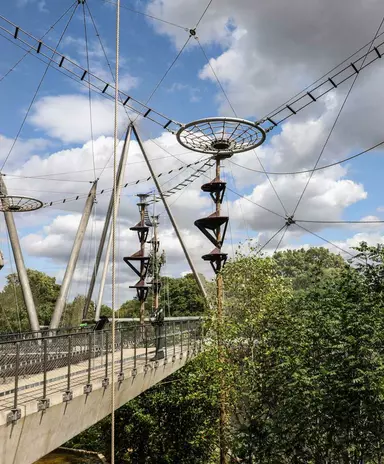
Soar with our Colobus monkeys at Monkey Valley, which reaches incredible 80ft above the London skyline and transports visitors to the lush mountainous forest of Central Africa.
Ethics of zoos
Well-planned reintroductions should always be a last resort, as it is better to enable wild populations to grow and expand their range naturally. Good conservationists will make sure all other avenues have been explored – such as creating habitat connections or carrying out wild-to-wild translocations.
And before reintroductions can happen, we must ensure habitats are healthy enough to sustain a growing population and are free from risks of poaching, conflict with humans, or wildlife disease.
But it’s not all bad news - and being part of global breeding programmes is just one facet of our work for wildlife.
We are thinking bigger, broader, more laterally: we see a future for the world’s wildlife and are working all over the world to tackle the root issues threatening it.
Leading conservation at Tiny Giants
We’re working closely with the South Sumatra government in Indonesia on a landscape management project to try and address some of the issues wildlife are facing, including creating wildlife corridors to allow tigers safe passage through larger ranges. Where palm oil plantations and unsustainable practices such as peatland drainage for industrial timber are rapidly changing the landscape for tigers, elephants, rhinos and orangutan, we’re working to develop alternative sustainable income streams for public and private land managers.

Thousands of people in the Philippines are benefiting from Net-Works, ZSL’s innovative approach to coastal biodiversity conservation: creating community income streams that reduce plastic pollution and replenish fish stocks.
In Africa, ZSL’s professional law enforcement training is helping authorities combat the increasingly well-financed criminal gangs that control the illegal wildlife trade. Last year in Benin, we supported the arrest of four ivory dealers and the confiscation of half a tonne of pangolin scales - Africa’s largest ever pangolin scale seizure.
Our zoo conservation work
Our wildlife health research is focussed on detecting, understanding and treating disease, as well as addressing their causes and training and supporting wildlife health professionals around the world.
These kinds of interventions protect biodiversity and provide sustainable livelihoods, helping people and wildlife to co-exist.
All of which makes ZSL’s role – and the role of all good conservation organisations – much bigger than reintroduction.
But we still need good zoos. Not only to provide a critical haven for Endangered species but also as a unique environment to learn both from and about animals – learnings which are shared with other zoos across the world and with conservationists in the field, who use this critical information to carry out their work in the wild.
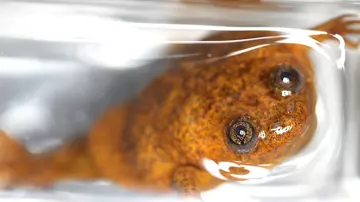
Zoos are also vital for education and inspiration: over a million visitors are inspired by visits to ZSL London Zoo every year, while many notable conservationists have recounted how a visit to a zoo started them on their path to preserving the planet. Sir David Attenborough’s earliest expeditions were with ZSL London Zoo, filming for the BBC series Zoo Quest in the 1950s.
If the crux of our work is improving the relationship between people and wildlife, simply releasing animals into the wild - while undoubtedly an achievement – should not be our only goal.
Our four ibis arriving in Spain are the culmination of 20 years of work with the species at ZSL London Zoo: caring for the population, learning more about their mating habits and ultimately breeding a healthy flock able to survive in the wild.
In the meantime, we must continue to preserve healthy animal populations in responsible zoos, while also continuing to work in the wild to make habitats truly habitable.
Stories across the zoo
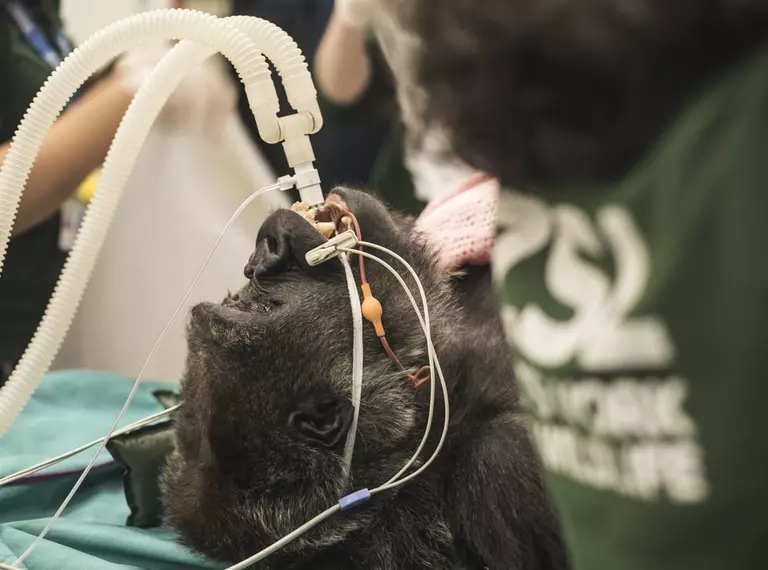
Life saving gorilla surgery
When keepers noticed that Effie was off her food and spending increasing time away from her family, they called on the Zoo’s expert veterinary team for help.

Stars and Stripes: meet London Zoo's baby okapi
Oni the okapi delighted zookeepers at London Zoo by giving birth to a healthy baby girl in September 2020
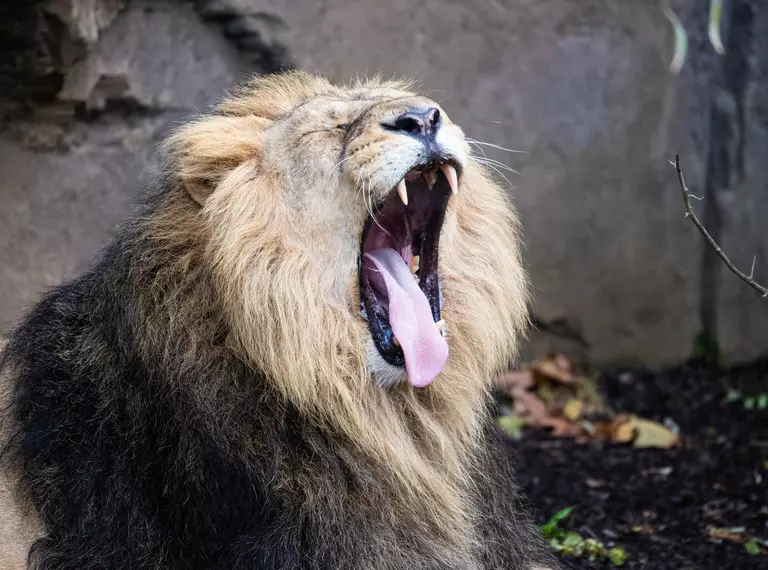
How to train a lion…
Just like people, every animal has different personality traits and behaviours that mean their training need to be tailored specifically to them.
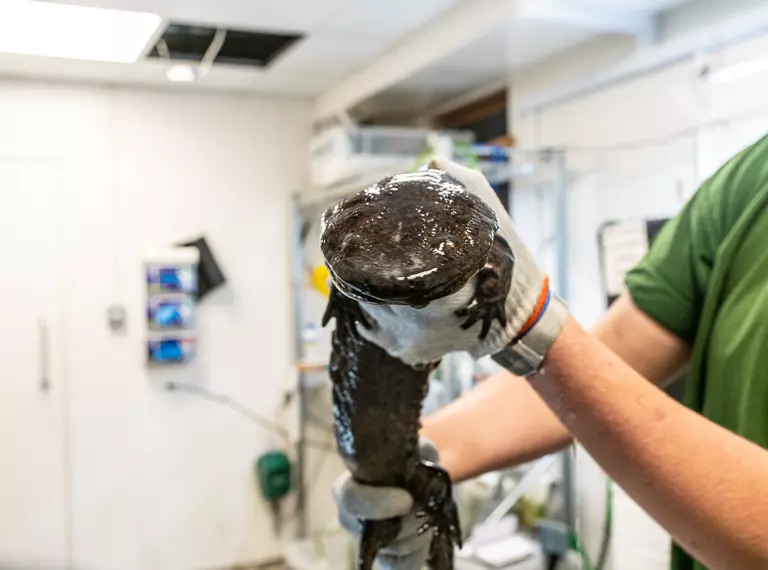
Chinese giant salamander
Chinese giant salamanders are the world's biggest amphibian, at full size they are around the size of a fully grown man at 1.8m in length.
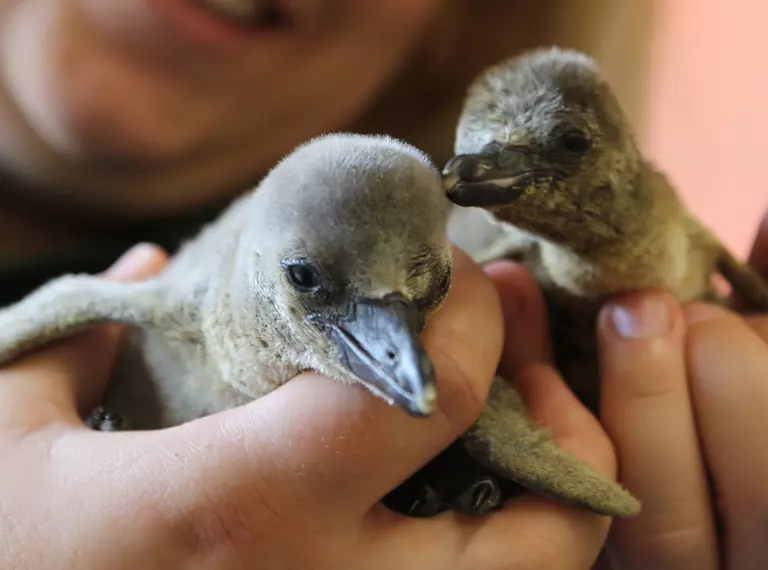
How a penguin lays an egg
Watch one of our penguins lay their first ever eggs in their nest, which is called a scrape.
- International edition
- Australia edition
- Europe edition
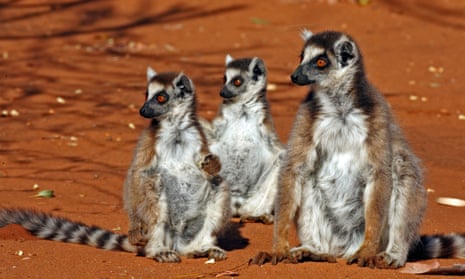
Why the world needs zoos
The ongoing extinction crises shows that zoos are needed - even for common species
I have written before about the importance of zoos and the role they have to play in the world for conservation and education. They are in particularly important for endangered species – many animals are critically endangered in the wild and may go extinct there soon but are going strong in zoos. Many others are already extinct in the wild and only survive because of populations kept going in captivity. Even those critical of zoos often recognise this role and that it is better to have species preserved somewhere than be lost for all time. However, even species that are common can come under severe threat very quickly or without people realising.
Take the ring-tailed lemur of Madagascar for example. This animal is almost ubiquitous in zoos and few do not keep groups of these pretty primates as they breed well in captivity and the public are fond of them. However, despite their high numbers in collections around the world, they are under severe threat in the wild. A recent survey suggested that a huge 95% of the wild populations have been lost since 2000 . This is clearly catastrophic and also means that the remaining individuals are greatly at risk. One bad year or a new disease could wipe out those that are left, and small and fragmented populations will be vulnerable to inbreeding so even a single loss can be keenly felt.
Such trends are not isolated. Giraffe are another species that are very common in zoos and unlike the lemurs are very widespread being found in numerous countries across much of sub-Saharan Africa. Anyone who has been on safari in Kenya, Tanzania, South Africa or plenty of other countries will have had no trouble in seeing plenty of them in the wild and yet giraffe populations have gone down by a third in the last thirty years . While less dramatic than the lemurs, this is obviously a major loss and again, whole populations (which some scientists think are in fact unique species) are on the verge of extinction.
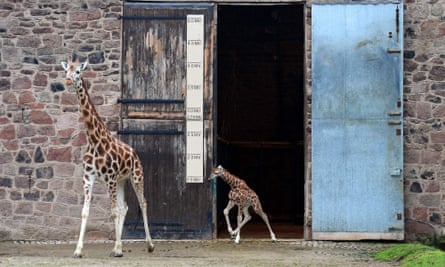
Cheetahs too, despite protection and efforts to support populations, are showing a major decline in their wild populations, primates as a whole are doing badly (it is suggested some 60% of species are at risk ) and that’s on top of the major crisis facing huge numbers of amphibian species . Many other species are probably facing sudden drops in numbers and some estimates are particularly worrying with suggestions that 50% of species could be gone at the end of this century . Conservationists struggle to monitor even species known to be vulnerable, so it is easy to see why common species might be overlooked especially if the perception is that they are not at risk because there are large numbers. Even a dramatic local loss might be overlooked on the assumption they are populous elsewhere but clearly that’s not always the case.
Ongoing and future issues from climate change (more extreme weather events, as well as things like overall warming and sea level changes) can have dramatic and unexpected effects on wildlife and we will likely struggle to predict which might be at risk. The numbers of species showing major losses, and the number that we overlook until things are already critical is only likely to rise. A new study suggests that climate change has already harmed over half of all mammal species on the endangered species list for example, and that is only likely to increase as more species are put under pressure from climate change and other environmental pressures.
In short, while zoos do provide a critical reservoir for endangered species, many other animals may yet become endangered very soon, or already are and we don’t know about it. Those species that are held in zoos are already protected from any such events and trends. In may not be long until ring tailed lemurs and many other species are only held in zoos and their loss from the world would be otherwise both tragic and irreversible.
There will, I suspect, always be resistance to the arguments for keeping animals in captivity and I will not defend those bad zoos desperately in need of improvement or closure . But if we wish to keep any real measure of biodiversity on the planet, we may lean on zoos and aquaria far more than many realise. If even common and popular species can lose a huge percentage of their populations in a few years, it may be too late to save them with even the best breeding programs or conservation efforts in the wild. As seen here, too often we do not even know a species is under threat until their numbers have crashed to dangerously low levels and this is a trend that is only likely to continue.
- Lost worlds revisited
Most viewed

A Visit to a Zoo Essay in English [100, 150, 200, 250, 500 Words]
A Visit to a Zoo Essay in English: A zoo is a place where animals and birds are put on display for people to view. In this article, you are going to learn how to write an essay or a paragraph on a visit to a zoo in English. Here we’ve provided 5 short and long essays ( 100, 150, 200, 250, and 500 words). These essays/paragraphs will be helpful for the students from class 1 to class 12. So, let’s begin.
Table of Contents
A Visit to a Zoo Essay: 100 Words
A visit to the Zoo is always very interesting. Last Sunday I went to the Delhi Zoo with my friends. First of all we saw apes and monkeys in different cages. They were climbing up and down their cage. In other cages, tigers, lions, bears, foxes, wolves, and zebras were kept.
We also saw deer and kangaroos. Next, we saw many varieties of birds like cranes, ducks, pigeons, parrots, kingfishers, owls, etc. We also saw our national bird peacock in the zoo. Then we came to the glass houses. Animals of different kinds and colour were kept in them. At last, we enjoyed an elephant ride and returned home.
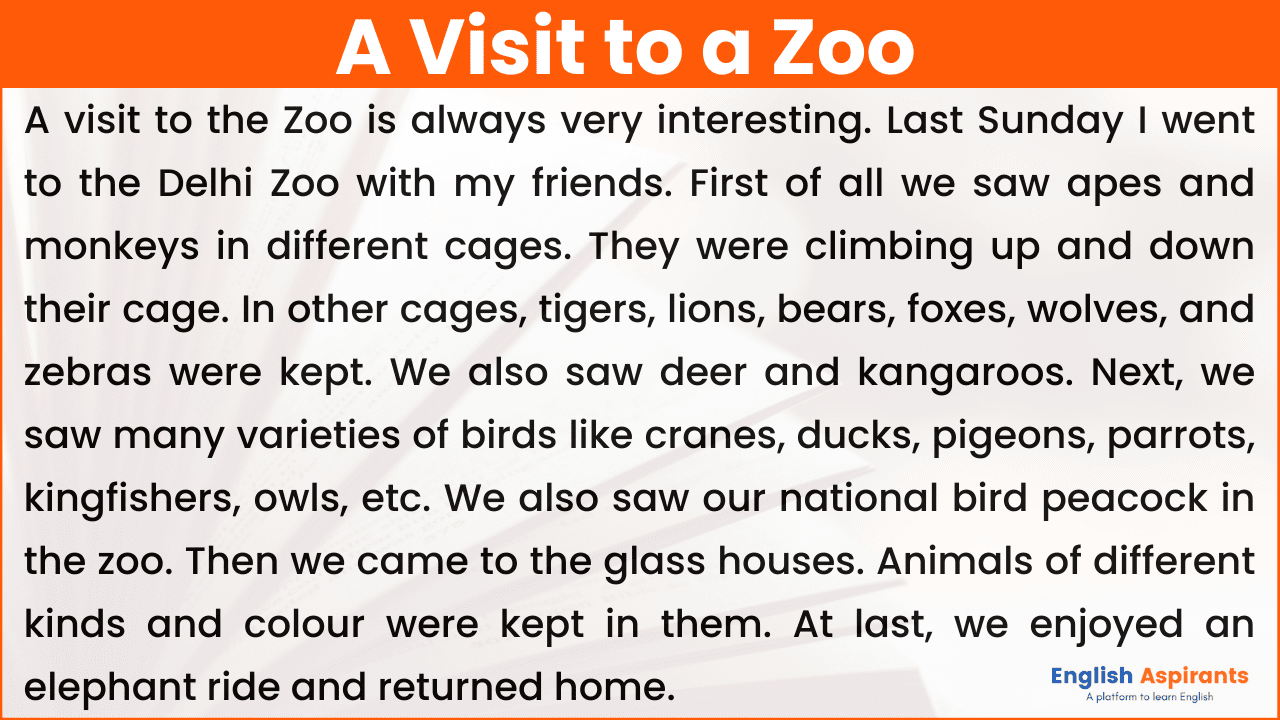
Also Read: A Visit to a Historical Place Essay
Essay on a Visit to a Zoo: 150 Words
Last Sunday, I visited a zoo with my family. First, we went round the bird’s section. We saw parrots, sparrows, pigeons, peacocks, eagles, and vultures. Then we saw the cages of wild animals like tigers, lions, and leopards. A lion was walking up and down restlessly. It often roared furiously. The baby tigers were playing in their cage.
We saw the deer park, where only the deer were kept. We also saw zebras, bears, foxes, giraffes, a hippo, and a rhino. Then we went to the huge enclosure where the elephants were kept. They were eating grasses, leaves, and bananas. We enjoyed watching the monkeys.
We saw serpents, pythons, and cobras. Next, we saw many swans and ducks swimming gracefully in a big pool of water. The crocodiles lay Lazily near the water. We also saw a tank which contained small fishes of fine colours. We had a great fun at the zoo.

A Visit to Zoo Essay: 200 Words
A zoo is a place where animals and birds are kept for public display. We, the three friends, went to the Alipore Zoo, Kolkata. We saw two elephants, tied with iron chains by their hind legs. The visitors offered them bananas or nuts which they gladly accepted and swallowed. We were greatly amused to see the huge animals from so near.
Then we visited the bird’s section. There were hundreds of birds. They were of various colours and had lovely plumage (feathers). Their chirping produced soft music. The twittering of sparrows was very pleasant to the ear. At some distance, there was a big pool of water. Many ducks and swans were swimming gracefully in it. We also saw a tank which contained small fishes of fine colours.
Then we came to the cages of tigers, panthers, leopards and lions. They were wonderful. The serpent house gave us a new experience. We saw there various types of snakes on the first floor. Then we saw the bisons, the camels, the ostriches and the bats. The zebras and giraffes were really beautiful who looked innocent and friendly.
It was about 2 P.M when we had taken some light refreshment in the zoo canteen. In this way, we passed the day with much delight and acquired a wonderful experience.
Also Read: A Journey by Train Essay
A Visit to a Zoo Essay: 250 Words
A Visit To A Zoo is very thrilling. I went to see the zoo with my younger brother. One is surprised to see such a variety of animals and birds. It was an interesting sight. First of all, we saw the monkeys. They were of many kinds and very amusing. We offered some nuts to them.
Then we came to the lions. They looked very fierce and majestic. They were kept in an open place enclosed with high iron railings. Sometimes they roared terribly. Next, we saw the tigers. They had yellow skins with black stripes on them. In the next two cages, there were a wolf and a fox. The wolf was sleeping, but the fox was walking within the cage.
Then we saw the long-necked giraffe, the dark-striped zebra, the thick-skinned rhinoceros, and a huge elephant with beautiful ivory tusks. We were very pleased to see them. After this, we came to the glass houses where reptiles were kept. There were snakes, cobras, and serpents. Some of them looked fearful. We did not stay there long.
Then we came to the fences where peacocks were kept. It was a treat to see one of them in his pride (i.e. with his tail spread like a fan).
We stayed three for three hours. We were tired. At last, we went to the cafe and had some refreshment and tea. Then we returned home. We enjoyed our visit very much.
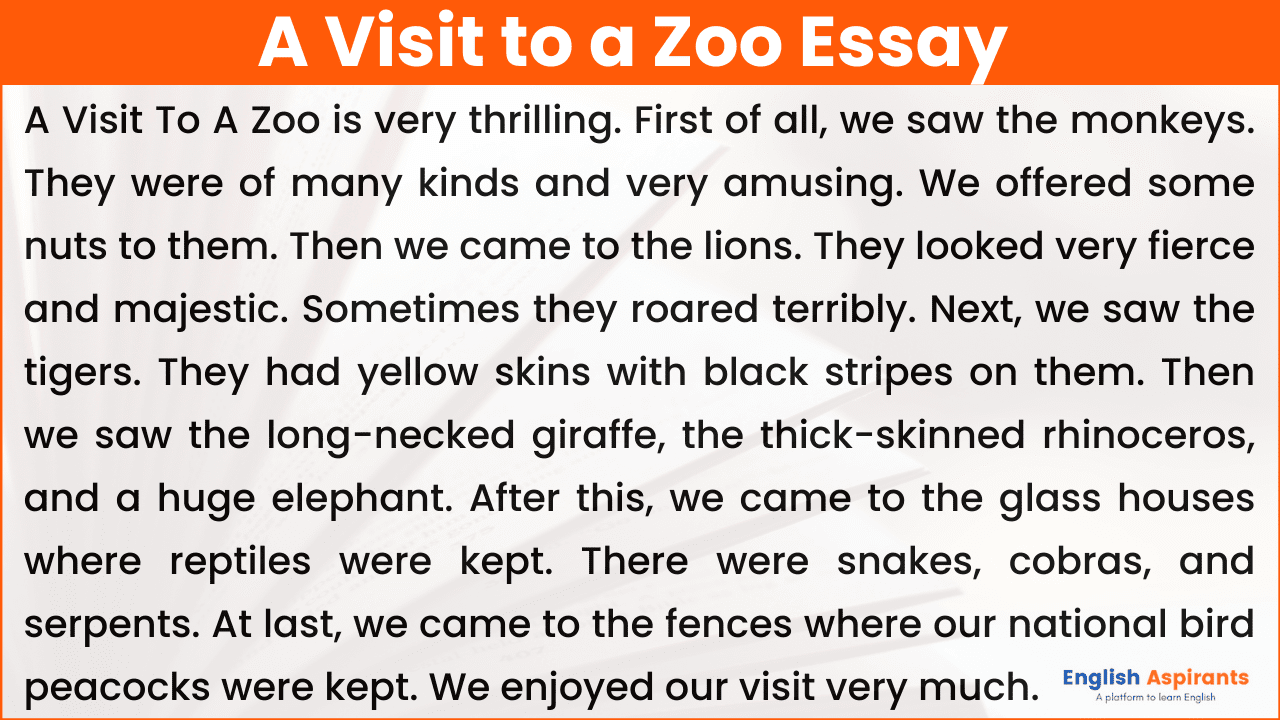
Essay on a Visit to a Zoo: 500 Words
Introduction:.
Everyone needs relaxation and an occasional deviation from the drudgeries of daily existence. A visit to a zoo can offer him these. At the same time, it is a learning experience. It was with this intention that visited the Alipore Zoological Garden last 25th December with some of my friends. This visit was memorable because it was both enjoyable and educational.
Entering the Zoo:
We reached the gate of the zoo in a taxi around 10 am. One has to buy tickets to enter the zoo. A number of visitors were already standing in a queue before the ticket counter. We stood behind them, got our tickets and entered the big arena of the zoo.
Various Types of Birds and Animals:
We crossed the green sward and were greeted by varieties of monkeys in cages. Monkeys and baboons were jumping on the trees within their enclosures. When some people threw food at them, they immediately jumped down from the trees to eat. Some children were making faces at them.
Then, we came across a beautiful lake in which some water birds like ducks and swans were present. There were some migratory birds as well. As we moved, we came to the big netted enclosure in which birds were kept. There were sparrows, parrots, and many other birds. Most of them were twittering, chirping and whistling. But the owls were sitting with their eyes closed as if they were lost in deep thought. The chirping of the birds went on ringing deep in my heart. In their songs, I heard the voice of nature to which the whole universe surrendered. I felt that all was right with the world.
We visited the tigers, lions, zebras, giraffes, rhinos and elephants. Roars of the lions and the tigers were deafening. We found a tiger pacing restlessly with its bloodshot eyes. It was strongly built.
Then we came across a garden in which stags and deer were frisking about. These animals were very agile and beautiful.
Our next halt was at the aquarium section. There were fishes of many species and colours. To see them swimming to and fro in the water was really a rewarding experience. Just beside this enclosure, was the cage of a black bear. It attracted a mammoth gathering. The bear was playing many tricks that thrilled us. Some people offered it eatables which it gulped at once.
Leaving the Zoo:
At about 2 pm, feeling tired, we rested and relaxed on the grassy ground for half an hour. The fragrance of flowers coming from somewhere was really soothing. We again began to stroll around the zoo after having our lunch. We saw a variety of amphibians like crocodiles, snakes, frogs, and a variety of other creatures. Then we hired a boat and enjoyed a short pleasurable ride in the canal. It was around 5 pm when we came out of the zoo. We boarded a bus, casting our last and lingering look on the zoo.
Conclusion:
I reached home in a cheerful mood. This visit refreshed my mind and deepened my awareness of the animal world.
Read More: 1. Essay on a Visit to a Historical Place 2. Essay on a Visit to a Book Fair 3. Essay on a Visit to a Hill Station
Related Posts
Apj abdul kalam essay in english | 100, 200, 300, 500 words, blood donation essay in english | 150, 200, 300 words, my mother essay in english 10 lines [5 sets], essay on mother teresa in english for students [300 words], 5 thoughts on “a visit to a zoo essay in english [100, 150, 200, 250, 500 words]”.
The essay are very important for me.
Thank you for sharing. It will be easy for kids to understand and remember
Welcome. Keep visiting our website
This is very useful for me thank you so much ❤️❤️❤️❤️❤️❤️❤️❤️❤️❤️❤️❤️❤️❤️❤️❤️❤️❤️❤️❤️❤️❤️❤️🇮🇳🇮🇳🇮🇳🇮🇳🇮🇳🇮🇳
Very helpful
Leave a Comment Cancel Reply
Your email address will not be published. Required fields are marked *
Save my name, email, and website in this browser for the next time I comment.
Should Animals Be Kept in Zoos? Essay
Cover letter, works cited.
This essay explores the dilemma of keeping animals in zoos. In this essence, the legitimacy of restricting the animals is investigated.
Moreover, the essay seeks to establish harmony between advocacy for abolition of zoos and the need to preserve some species of animals. In addition, there is the necessity to control the interaction between animals and human beings.
I have observed that there is no solution to such dilemmas. Any observer has to establish a middle ground and maintain balance between the arguments. This is because it is not possible to take a radical action on the issue at hand.
I had an experience of arguing over the issue, which has two equal sides while writing the paper. I was able to examine both sides of the argument and analyze the arguments.
While it seemed appropriate to me that people should keep animals in the zoos prior to this assignment, my perception changed after analyzing both sides of the argument. I had to take a middle ground and analyze the perceptions as a neutral observer.
When writing the arguments in the paper, it became difficult to make an objective analysis of the arguments due to the influence of personal opinion. It is difficult to establish a middle ground that does not favor either side.
The topic of the essay generates significant interest in me because most people assume that animals have their specific places in the ecosystem, which are subject to manipulation by human beings at will.
On the other hand, liberal people advocate that fair competition can exist between animals and people naturally. This article proves that neither case is entirely true.
Throughout the history of humanity, interaction with animals has been inevitable. Superiority of human beings has made them highly competitive. Other living things have to adapt to new environments or leave their natural habitat to create space for human beings and their activities.
The human population is evenly distributed around the world. On the other hand, animal population is partially distributed, with different species occupying different parts of the world. Since animals have always fascinated people, there has always been the urge to observe animals and their behavior.
In addition, all living organisms on earth survive through competition for resources with each other (McKinley & Shepard 65). This has led to endangerment of some species of animals. Generally, animals are considered important to human beings, regardless of the material value of each species.
Gradually, it has become important to protect animal species that are facing the danger of extinction, either due to encroachment of their immediate space in the ecosystem, or due to competition with other organisms whose lives depend on common resources.
For this reason, zoos have been built, and animals are kept inside for the sole purpose of preservation of animal life or for entertainment (Norton 42). It is true that the zoos protect a small number of animals from the competition that exists in their natural habitat.
In this way, they protect the species from extinction, and satisfy human being’s curiosity as people go for sightseeing at zoos as a recreational activity (Norton 21).
Most zoos keep wild animals, and majority of the animal population at the zoos is made up of animals that are rarely seen by human beings in their immediate environment. These animals are used to roaming in the jungle and forests.
Others are used to swimming freely in the seas and rivers. However, due to limited space, zoos keep the animals in a much smaller and controlled environment. Obviously, there is restriction of freedom for the animals in order to contain them in the zoo.
For most of their lives, the animals in the zoo do not lead a normal life like other wild animals. They are protected from the competition in the ecosystem due to their perceived importance to human beings. However, this is a serious impediment to their freedom too.
Animals are not allowed to roam freely during the day or night, as they would have done in a free environment. On the other hand, the rigors of competing with other wild animals are eliminated from their lives.
Moreover, the animals receive special treatment as they are provided with veterinary care, a service that other animals in the jungle and sea do not normally get (Robinson 53).
It is arguable that the setting of a zoo is analogous to a prison were felons are incarcerated to protect the society from their potentially harmful tendencies.
One might easily conclude that the animals in the zoo are in some kind of psychological distress due to disruption of their normal course of life and their detainment.
This view assumes that animals, like human beings, have the ability to discern the importance of freedom. Furthermore, the notion argues that animals have thoughts and feelings just like human beings.
It is difficult to establish these arguments as facts due to the limited emotional interaction between animals in the zoo and their keepers.
Thus, the idea that animals perceive physical freedom in a similar way as human beings is subject to debate (Mullan & Marvin 75).
Zoos are not primarily intended to curtail the freedom of an animal, but are designed to protect the animal from harsh environment. Normally, there are efforts to create an environment similar to the particular animal’s habitat in the zoo.
It is also difficult to assess whether the artificial environment created by zookeepers is identical to the natural habitat suitable for the animals.
This observation means that it is not entirely true that the zoos are aimed at curtailing the freedom of the animals (Brooman & Legge 85). Consequently, the animals may be better off at the zoo.
Moreover, it is not true that zoos completely change the normal course of life for the animals within it since there is an effort to simulate their natural habitat.
Some people are of the opinion that animals are inferior to human beings. This suggests that zoos are meant to restrict the animals within the zoo environment to protect human beings’ interest.
Some animals are dangerous to human life, while others compete against human being for resources. This is an obvious observation that has been under scientific study.
On the other hand, animals could be perceived to be equal to human beings. This means that the animals can compete for resources fairly against human beings.
Some people use this perspective to argue against establishment of zoos, which in their perspective, are the making of an unfair competition between animals and human beings.
The highlighted perceptions and observations present the dilemma of the existence of zoos. In a critical analysis of all radical perceptions, no single argument is proved entirely appropriate for the issue of zoos.
If zoos were to be eliminated as a way of protecting and preserving animal life, there would be dire consequences for humans and the animals themselves (Acampora 45).
It is an obvious observation that some animals would become extinct due to predation and competition from other animals in the natural habitat. People could also be affected by the interactions and conflicts between the animals and human beings.
While some animals would pose direct danger to human beings, others would affect the creations of human beings such as organized agriculture. It is thus obvious that a conflict will result from the freedom of animals.
However, this presents another question for argument since there is fairness in sharing of natural resources by living organisms in such a situation.
Although a relatively small number of animals are kept in the zoo, majority of animals are free and live in the wilderness. This brings up the issue of the scale of restriction of animals within zoos.
Keeping all animals in the zoo and eliminating them from their natural environment is an extreme action. This kind of an action would present a situation of extreme interference with nature. It is only logical that a balance between freedom of animals and existence of zoos has to be established.
Animals could be kept in an open environment that is similar to their natural habitat as much as possible. This would eliminated the problem of having animals in a zoo were cages similar to prison cells are used to contain the animals.
On the issue of competition, it would be unfair to let animals live free and compete against human beings in the natural environment. People would eliminate animals from the ecosystem due to their superiority in terms of logical reasoning.
This makes it necessary to provide some kind of protection for the animals. In this essence, zoos can neither be justified nor completely denounced.
Acampora, Ralph R.. Metamorphoses of the zoo: animal encounter after Noah . Lanham, Md.: Lexington Books, 2010. Print.
Brooman, Simon, and Debbie Legge. Law relating to animals . London: Cavendish, 1997. Print.
Mullan, Bob, and Garry Marvin. Zoo culture . 2nd ed. Urbana: University of Illinois Press, 1999. Print.
Norton, Bryan G.. Ethics on the ark: zoos, animal welfare, and wildlife conservation . Washington: Smithsonian Institution Press, 1995. Print.
Robinson, Phillip T.. Life at the zoo: behind the scenes with the animal doctors . New York: Columbia University Press, 2004. Print.
Shepard, Paul, and Daniel McKinley. The subversive science; essays toward an ecology of man, . Boston: Houghton Mifflin, 1969. Print.
- Chicago (A-D)
- Chicago (N-B)
IvyPanda. (2023, November 30). Should Animals Be Kept in Zoos? https://ivypanda.com/essays/should-animals-be-kept-in-zoos/
"Should Animals Be Kept in Zoos?" IvyPanda , 30 Nov. 2023, ivypanda.com/essays/should-animals-be-kept-in-zoos/.
IvyPanda . (2023) 'Should Animals Be Kept in Zoos'. 30 November.
IvyPanda . 2023. "Should Animals Be Kept in Zoos?" November 30, 2023. https://ivypanda.com/essays/should-animals-be-kept-in-zoos/.
1. IvyPanda . "Should Animals Be Kept in Zoos?" November 30, 2023. https://ivypanda.com/essays/should-animals-be-kept-in-zoos/.
Bibliography
IvyPanda . "Should Animals Be Kept in Zoos?" November 30, 2023. https://ivypanda.com/essays/should-animals-be-kept-in-zoos/.
- The Effectiveness of Sustainable Practices, Plans, Programs and Initiatives Implemented by Australian Zoo
- The Analysis of Siamangs’ Behavior in a Zoo Setting
- Zoos: Advantages and Disadvantages
- Structural and Non-Structural Mitigation
- Which Material Withstand a Fire
- Prospect Reservoir and Surrounding Areas: An Australian National Heritage Site
- South Wales Region: Energy and Economy
- History of the Great Chicago Fire
- IELTS Scores
- Life Skills Test
- Find a Test Centre
- Alternatives to IELTS
- General Training
- Academic Word List
- Topic Vocabulary
- Collocation
- Phrasal Verbs
- Writing eBooks
- Reading eBook
- All eBooks & Courses
- Sample Essays
In this IELTS Zoo Essay you have to discuss whether you think zoos are cruel and should be shut down or whether they are useful as they protect some wild animals.
Essays on zoos have appeared in the IELTS test before and this was a question that was recently in the test.
Some people think that zoos are all cruel and should be closed down. Others however believe that zoos can be useful in protecting wild animals.
Discuss both opinions and give your own opinion.
Understanding the Question
You must always read the question carefully and note if there is anything restricting the topic.
You have to discuss both sides of the argument and with this zoo essay question it would be very easy to read it and then simply write about the benefits and drawbacks of zoos.
But look at this bit carefully:
- Others however believe that zoos can be useful in protecting wild animals .
One of the arguments is specifically about protecting animals. So when you discuss the second argument you must be careful not to just write generally about the advantage of zoos.
You have to focus on how they may protect wild animals . So when you brainstorm your ideas for the zoo essay, you should be thinking about:
- why animals need protecting and
- how zoos can help with this
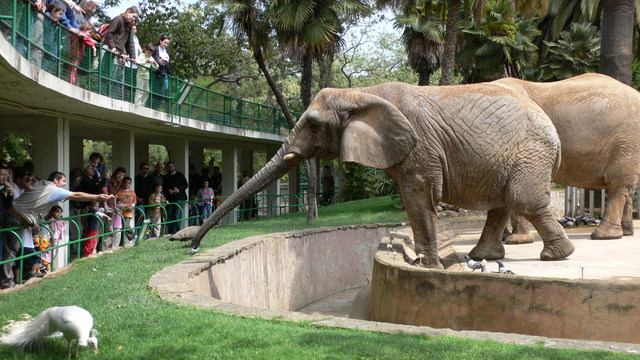
And in your other body paragraph you would need to explain why they are also seen as cruel.
And of course you must remember to give your own opinion. In this essay, the author makes it clear at the beginning that they support the closing down of zoos.
The opinion you decide on though is of course your choice.
Zoo Essay Sample
You should spend about 40 minutes on this task.
Write about the following topic:
Give reasons for your answer and include any relevant examples from your own experience or knowledge.
Write at least 250 words.
Zoo Essay Model Answer
Zoos remain popular places for people to visit for entertainment and to learn about wild animals. Although some people are of the opinion that zoos can provide a sanctuary for endangered animals and so should be kept open, I believe that the cruelty that animals suffer outweighs this benefit, and that they should be shut down.
These days, animals are under threat from humans in many ways, seen for example in the way that their habitats are being destroyed through the cutting down of rain forests, or through poaching. Following on from this, the argument is that zoos can protect some of these animals that are under threat. The reason is that they are in a safe environment managed by trained staff who can ensure the animals are looked after and can produce offspring. There are examples of successes in this respect, such as with Pandas, which have been endangered for many years but have been protected.
However, there are more convincing arguments for why zoos should be shut down. Firstly, even though some species are under threat, there are lots of animals which do not fall into this category and who are there just for the entertainment of visitors. While it may be fun and educational to see them, animals are not meant to be caged, and their distress can often be seen in the way many of them pace back and forwards all day. Not only this, if the prime reason of zoos is to protect animals, this could be done in other environments such as wild life parks where the animals have more freedom.
In conclusion, animals should be protected but this does not have to be in zoos. Zoos are cruel to animals, not similar enough to their natural habitat, and they should be closed down.
(299 Words)
Band scores are given for task response, coherence and cohesion, lexis (vocabulary) and grammatical range and accuracy.
This zoo essay would get a good score for task response as it fully answers the question by discussing both opinions and giving a personal opinion. Ideas are also well explained, extended and supported.
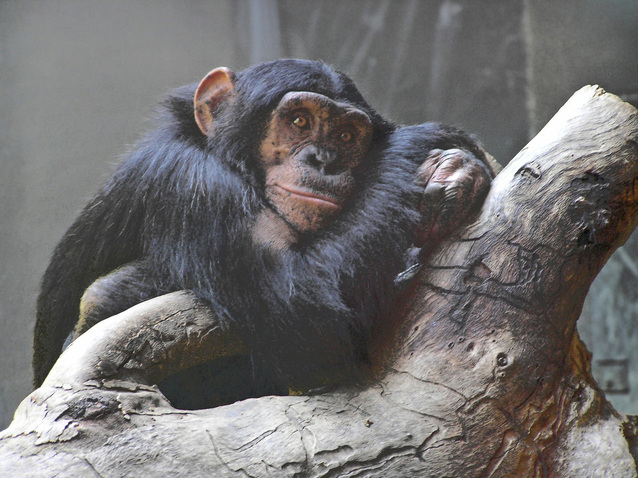
It would get a good score for coherence and cohesion as it is organised coherently and logically and is easy to follow. The introduction introduces the topic then there is a thesis statement.
One body paragraph discusses one side of the argument, and the other discusses the other side. The second body paragraph is also the writers opinion, and this is summarised again in the conclusion
.There is some interesting vocabulary and phrases. For example:
- sanctuary for endangered animals
- under threat from humans
- habitats are being destroyed
- produce offspring
- successes in this respect
- not meant to be caged
- natural habitat
There are also some good complex grammatical constructions and the grammar is precise. For example, the red words show that some of these are adverbial clauses , noun clauses and relative clauses :
- Although some people are of the opinion that zoos can provide a sanctuary for endangered animals...
- ...seen for example in the way that their habitats are being destroyed...
- ...the argument is that zoos can protect some of these animals who are under threat.
- ...trained staff who can ensure the animals are looked after...
- Pandas who have been endangered...
- ... even though some species are under threat...
- ... While it may be fun and educational...
<<< Back
Next >>>
More Discuss Two Opinion Essays:

Childcare Essay: Should family or carers look after young children?
Childcare Essay: In the essay you have to discuss two sides of an argument. The first is that it is better if pre-school children are looked after at home with relatives such as grandparents. The second opinion is that children should be looked after at childcare centres.
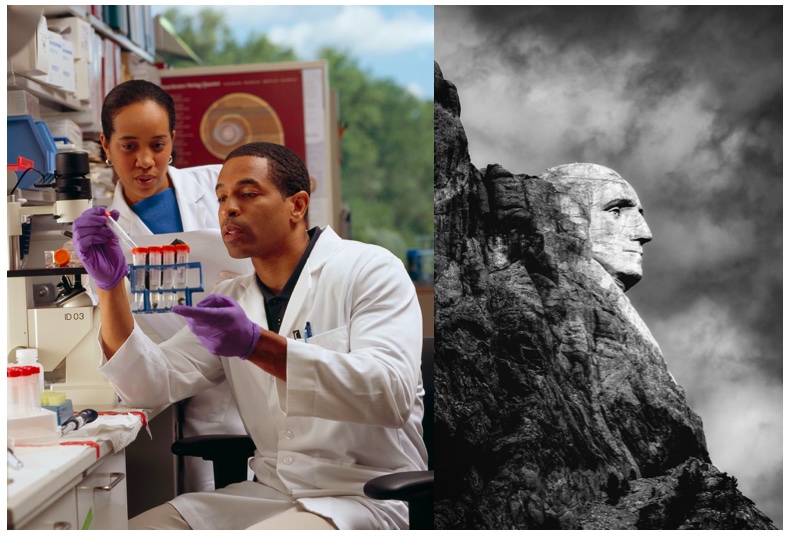
Influence of Scientists or Politicians Essay
Influence of Scientists or Politicians Essay- Model answer for IELTS. Who has had the most influence on our world? In this essay you have to discuss both sides.

IELTS Essays: What is the best way to reduce crime?
IELTS essays online with comments by an IELTS instructor - A writing sample on the topic of reducing crime.

Formal and Informal Education Essay: What age should it start?
This formal and informal education essay is about whether it is best for children to begin their formal education at school when they are 7 rather than much younger.
Sources for Stories Essay: Should parents read to their children?
This sources for stories essay asks for your opinion on the best way for children to get stories. Is it from parents reading to them or other ways?

IELTS Essay Becoming Independent
This IELTS essay discussed whether people are becoming more independent than they were in the past. This is a question that has come up a few times in the test. This is discussion type essay as you have to discuss both sides of an argument and come to a conclusion.

IELTS Writing Example: What are the aims of a university education?
IELTS writing example essays. This is an essay on the aims of university education. In this essay, two opposing opinions need to be discussed. It is important to understand how to answer this type of question in the IELTS exam.

Donating Money to Charity Essay: Where should the money go?
Donating Money to Charity Essay: IELTS model answer to an essay on the topic of giving locally or to national and international charities.

Child Development Essay: What factors influence a child's development?
Child Development Essay for IELTS. The essay is about the factors that affect the way that children develop. It provides you with a model answer and comments on the response to help you know how to improve your band score.

Extraterrestrial Life Essay: Should we look for life on other planets?
This extraterrestrial life essay is an IELTS opinion essay where you have to discuss both sides of an issue then give your own opinion.

Animal Rights Essay: Should animals be exploited for humans?
Animal Rights Essay for IELTS: Learn how to write an essay where you have to discuss two opinions. People who believe in animal rights think that they should not be treated cruelly, for example in experiments or for sport.

Diet and Health Essay: Who is responsible for diet and health?
Diet and Health Essay for IELTS: This model examines the extent to which individuals or governments should be responsible for health. Read a model answer and useful comments about the essay which will help you to improve your IELTS Score.
Any comments or questions about this page or about IELTS? Post them here. Your email will not be published or shared.
Before you go...
Check out the ielts buddy band 7+ ebooks & courses.

Would you prefer to share this page with others by linking to it?
- Click on the HTML link code below.
- Copy and paste it, adding a note of your own, into your blog, a Web page, forums, a blog comment, your Facebook account, or anywhere that someone would find this page valuable.
Band 7+ eBooks
"I think these eBooks are FANTASTIC!!! I know that's not academic language, but it's the truth!"
Linda, from Italy, Scored Band 7.5

IELTS Modules:
Other resources:.
- All Lessons
- Band Score Calculator
- Writing Feedback
- Speaking Feedback
- Teacher Resources
- Free Downloads
- Recent Essay Exam Questions
- Books for IELTS Prep
- Useful Links

Recent Articles
Taking a Gap Year
May 14, 24 03:00 PM
IELTS Essay: Loving Wildlife and Nature
May 10, 24 02:36 AM
Paraphrasing in the IELTS Test: Speaking and Writing
May 03, 24 10:26 AM
Important pages
IELTS Writing IELTS Speaking IELTS Listening IELTS Reading All Lessons Vocabulary Academic Task 1 Academic Task 2 Practice Tests
Connect with us
Copyright © 2022- IELTSbuddy All Rights Reserved
IELTS is a registered trademark of University of Cambridge, the British Council, and IDP Education Australia. This site and its owners are not affiliated, approved or endorsed by the University of Cambridge ESOL, the British Council, and IDP Education Australia.

IMAGES
VIDEO
COMMENTS
Get the huge list of more than 500 Essay Topics and Ideas. Disadvantages of Zoo. While the zoo is a great place for entertainment, it is also very exploitive. It takes advantage of the poor animals to make a profit off them. The zoos keep animals in very bad conditions. It takes unethical methods just to create revenue.
Most important, they learn from observing zoo animals. At the Saint Louis Zoo, about 500,000 children and adults participate in our formal programs, including classes and Camp KangaZoo each year. Of our 3,000,000 visitors annually, about 1.6 million interact with an educational interpreter, docent or zookeeper who provides educational ...
The short essay on zoo is suitable for children and students of class 1,2,3,4,5 and 6. Zoos are places where you can see animals, insects, and birds. It is a chance for humans to see the other inhabitants of the planet. It is a place where humans can learn various things about the animals and their species.
The zoo is a protected habitat place for animals (giraffe, tiger, monkey, lion, etc.) and birds (peacock, parrot, ostrich, etc.). Animals, birds and other creatures are kept in a limited space inside the zoo, and food and medicines are provided by concerned officials at regular intervals. The zoo is also considered a breeding ground for animals ...
Visiting a zoo brings human beings closer to these living beings. It makes human beings develop a liking for animals and birds. They get to learn so much about these animals too. Zoos have an aspect of geographical importance as well. They play a vital role in uniting and educating different communities.
A zoo is a unique place that combines good company, beautiful animals, and an educational setting. Moreover, it is a great way to understand the importance of protecting the environment. Another benefit includes the environmental effects of a zoo. They act as a safe haven for animals facing high risks and protect them from hunters.
200 Words essay on zoo. A zoo is a public facility where animals are kept and exhibited for the enjoyment and education of visitors. Zoos often have diverse animals from different regions, including lions, tigers, elephants, gorillas, and many others. Some zoos also have aquariums, aviaries, and other exhibits that allow visitors to see a wide ...
The Benefits of Zoos for Animals. Exploring the role of zoos in the modern age reveals a complex narrative where these institutions serve as sanctuaries for wildlife, contributing significantly to animal rehabilitation and conservation. Amidst debates on the ethical implications of zoos, it is crucial to delve into specific instances where zoos ...
Zoos: Advantages and Disadvantages Essay. The expediency of zoos and similar institutions is controversial since no artificially created conditions correspond to the natural range of animals' origin. However, people seek to tame or at least be closer to animals. Therefore, the emergence of zoos, detention centers, or theme parks is an obvious ...
For this reason, zoos became almost the only hope for the preservation and conservation of endangered species. If to compare with the past century, their role has altered greatly. In the 50s, zoos used to be fun centers where animals were kept just for entertainment. However, at the moment, they could be considered important scientific and ...
A zoo is a place where animals live in captivity and are put on display for people to view. The word "zoo" is short for "zoological park.". Zoos contain wide varieties of animals that are native to all parts of the Earth. Though people have kept wild animals for thousands of years, those collections have not always resembled modern zoos.
Cons of Zoos. On the other hand, there are several compelling arguments against the existence of zoos. One of the most significant concerns is the welfare of the animals. Many critics argue that the confined spaces and artificial environments of zoos are detrimental to the physical and psychological well-being of the animals.
The Role of Zoos in Conservation. 1. There are 39 animal species currently listed by the IUCN as Extinct in the Wild. These are species that would have vanished totally were it not for captive populations around the world, many of which reside in zoos. For me, this is the single most important role zoos can play.
Setting Up a Safari Zoo in the UAE. The paper below focuses on the barriers to setting up a safari zoo in the UAE. Through this, the study will identify the animals that are more likely to be comfortable in the zoo. The Effectiveness of Sustainable Practices, Plans, Programs and Initiatives Implemented by Australian Zoo.
The Ethics and Controversies of Zoos. The practice of keeping animals in zoos has sparked a passionate debate that revolves around ethical considerations and conservation goals. This essay explores the multifaceted arguments for and against the existence of zoos, delving into their roles in conservation, animal welfare, research, education, and ...
A Zoo is an artificial home to various types of animals, birds, and reptiles. It is a big area safeguarded by wire, trenches and other hindrances so that animals cannot run away or causes any kind of harm to the visitors. There are usually different sections for different types of animals in the zoo. If any student is looking for a sample essay ...
The importance of zoos in preserving endangered species; The challenges of managing a zoo and caring for its animals; ... With these 100 zoo essay topic ideas and examples, you should have plenty of inspiration to get started on your next assignment. Whether you're interested in the ethical implications of keeping animals in zoos, the role of ...
A zoo is a place where animals live in captivity and are put on display for people to view. The word " zoo " is short for " zoological park.". Zoos contain wide varieties of animals that are native to all parts of the Earth. Though people have kept wild animals for thousands of years, those collections have not always resembled modern zoos.
Lake Oku frog at London Zoo, which we breed to bring them back from the brink of extinction. Zoos are also vital for education and inspiration: over a million visitors are inspired by visits to ZSL London Zoo every year, while many notable conservationists have recounted how a visit to a zoo started them on their path to preserving the planet.
Dr Dave Hone. The ongoing extinction crises shows that zoos are needed - even for common species. I have written before about the importance of zoos and the role they have to play in the world for ...
Essay on a Visit to a Zoo: 150 Words. Last Sunday, I visited a zoo with my family. First, we went round the bird's section. We saw parrots, sparrows, pigeons, peacocks, eagles, and vultures. Then we saw the cages of wild animals like tigers, lions, and leopards. A lion was walking up and down restlessly.
Get custom essay. Most zoos keep wild animals, and majority of the animal population at the zoos is made up of animals that are rarely seen by human beings in their immediate environment. These animals are used to roaming in the jungle and forests. Others are used to swimming freely in the seas and rivers.
This is a recent zoo essay question from the IELTS test (June 2018). ... You have to discuss both sides of the argument and with this zoo essay question it would be very easy to read it and then simply write about the benefits and drawbacks of zoos. ... In this essay, two opposing opinions need to be discussed. It is important to understand how ...